Birds of Andaman Islands
- With Nature Clicks (Abhay Kewat)
- Feb, 2022

Team Collage
About Andaman ...
The first thing that connects most of us with Andaman is Veer Savarkar. But this trip of mine was all about the avian world of these Islands, so the blog will be covering only those aspects.
But before going into birding, some things about the Andaman archipelago. There are about 572 islands together in the Union Territory of Andaman & Nicobar. Port Blair (also the capital) is the largest among them and is a well-populated one. These islands are in the Southeastern direction from mainland India. Geographically, they may be closer to Thailand and Burma.
Nicobar islands are further south and are more sparsely populated. Till Port Blair, there are direct flights from multiple cities in India. But for Nicobar, one has to either a boat ride from Port Blair (take anything from 29 to 40+ hours depending upon how many halts the boat takes). One can also take a Helicopter ride but that isn’t a regular service and also has some dependence on weather. Similarly, the Norcondamn islands are a little remote (on the northern side of Port Blair). Some species of birds can only be seen on the Nicobar Islands (and some only on the Norcondamn island). But both of these were not on our agenda this trip. We were primarily covering the South Andaman region (that too only a few locations).
Just to get the perspective, the population of the entire Andaman & Nicobar region is about 4.5 lakh (compare that with Thane city alone having more than 15 lakh population).
These are some details about the Geography of the islands. What about its bio-diversity (and more so what birds do we see there)?
If we go a little into history, these islands were separated from the Indian Subcontinent, some 40 lakh years ago. At that time both regions must be having similar species but from then on the genetic development of the species here must have been independent. That has resulted in many species here that are counterparts of the mainland species. Some examples are Back Drongo & Andaman Drongo, White-rumped shama & Andaman Shama, (Andaman Coucal, Andaman Serpent Eagle, etc.).
Similar to the mainland, the monsoon season here is around June to Sep and from birding point of view, the best season is the Oct-Mar period (which has better weather as well as better chances of seeing the migratory species).
Based on the initial discussions with the tour leaders and guides, we will be visiting the following locations for birding:
1) Chidiya Tapu
2) Shoal Bay / Kaalatang
3) Sippi Ghat
4) Ograbraj Grasslands
5) Bathu Basti (for Masked Owl only)
Before coming here, I had checked with people who had visited this place in the past and had realized that most of this is going to be forest birding with tall trees. So we may be able to see many of these birds but getting good photographs will be difficult.
With that preamble, let’s get going with the actual trip..
Day One: Chidiya Tapu
These days random rescheduling flights has become common (maybe not many people are traveling still, so many empty seats are leading to cancellations. This resulted in our journey being routed via Delhi (which is an altogether different direction for our Mumbai to Port Blair travel). With that change, we had a stopover of more than 7 hours in Delhi (that too night time).
On reaching Port Blair we had an entirely different experience. I was expecting it to be a small airport but this was comparable to the rush we experience on the Mumbai local train. After reaching the airport building, we hardly had space to enter to get our bags from the belt. And after getting bags, there was a huge queue to get out of the airport (on account of checks for RTPCR certificates).
We were staying relatively close to the airport and our flight that day had reached 1 hour before schedule, so despite the mad rush at the airport, we were in the hotel before 10 am. Quick breakfast and we had time to rest (as our first trail was to start only by 2:30).
Our local guide for the next 5 days was going to be a young lady named Jabili Rao. She has been into birding for the last few years and as we discovered, is well versed with the nuances of the birding world.
We were 7 of us including Abhay (our tour organizer or guide/mentor) and were traveling in 2 cars (becomes a little easier if we have to do photography from the car). We started at 2:30 as planned, picked-up Jabili on the way, and went towards the Chidiya Tapu area.
On the way, we passed along a beach (this happens almost everywhere in Andaman as the sea is never far from anywhere we go). Jabili asked to wait there and pointed our attention to the Heron foraging on the shore. It looked like the Reef Heron that we are familiar with but this was the Pacific Reef Heron (something that we do not see in mainland India). Our journey of lifers (birds that we see for the first time in life) started from there. On the sands, we also saw a Collared Kingfisher.

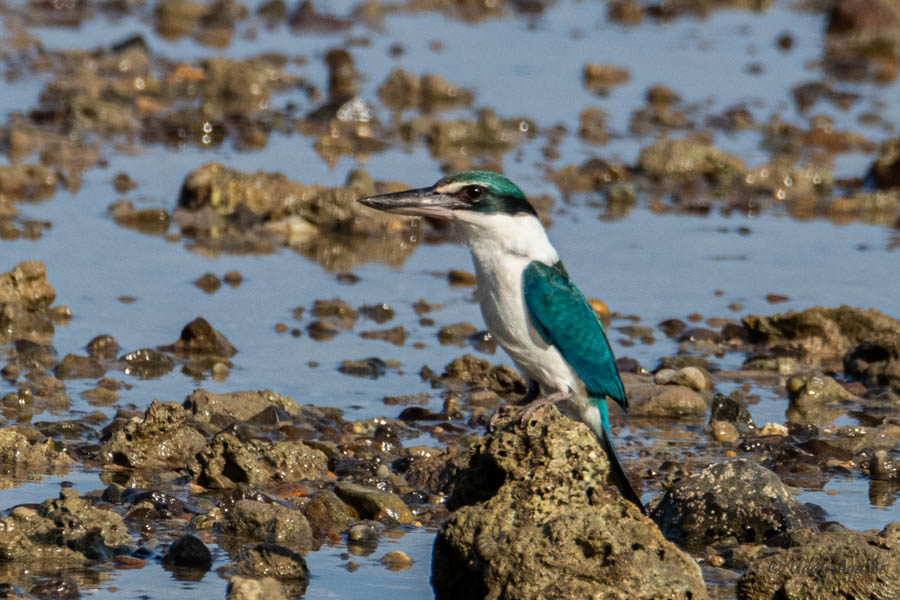
Within 15 minutes we moved from there and went straight towards the park (Chidiya Tapu Botanical Park). The park closes by 4:30 so we had about an hour and a half to explore it (even the light drops by 5 pm). The park isn’t a very big one and has decent pathways marked for the tourists to move around. It was full of tall trees (typical of the tropical region) and unfortunately (for us) the birds also preferred to perch on the top branches
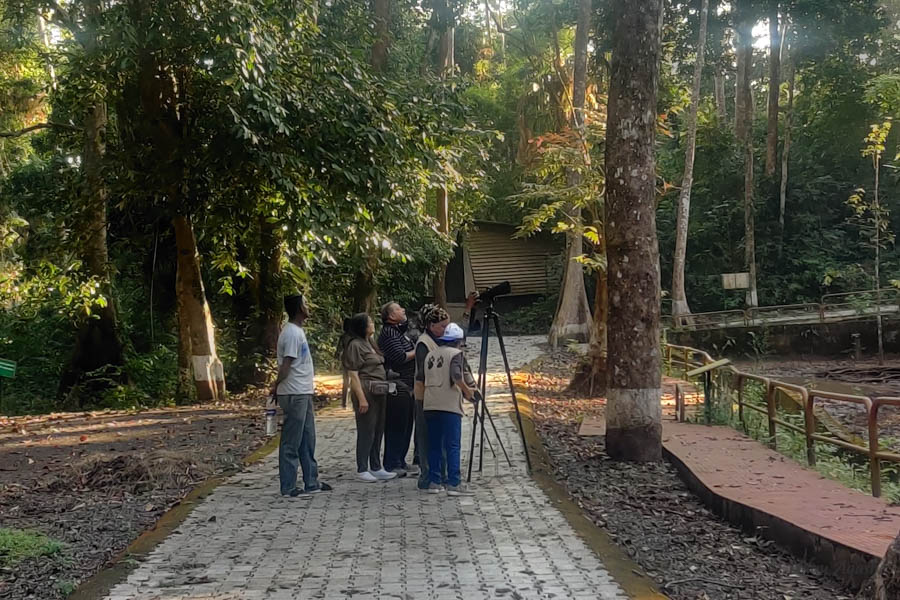

In the next one hour that we spent there, we could see the Andaman Bulbul, White-headed Starling, Asian Glossy Starling, Long-tailed parakeets, Red-breasted Parakeets, Andaman Drongo, and many other birds. We were also able to see both the Woodpecker varieties that we get to see in Andaman. And it is right to say, we were only able to see them (but the photos weren’t any good).
The park also has a few large cages where they nurse some of the injured birds. We could see White-bellied Sea-Eagle, and 4 Andaman Serpent Eagles there.
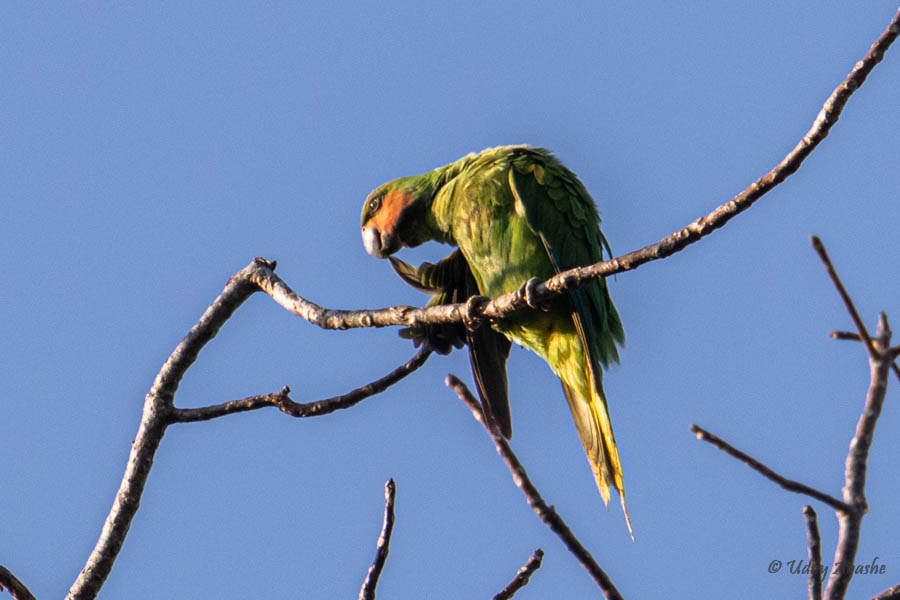

By five the light started dropping. Our evening plan was to search for the Owls. We then spent close to an hour at one of the tea stalls (some snacks and nice tea is good anytime!). Also took a few Sunset photos as the stall was right in front of the seashore.
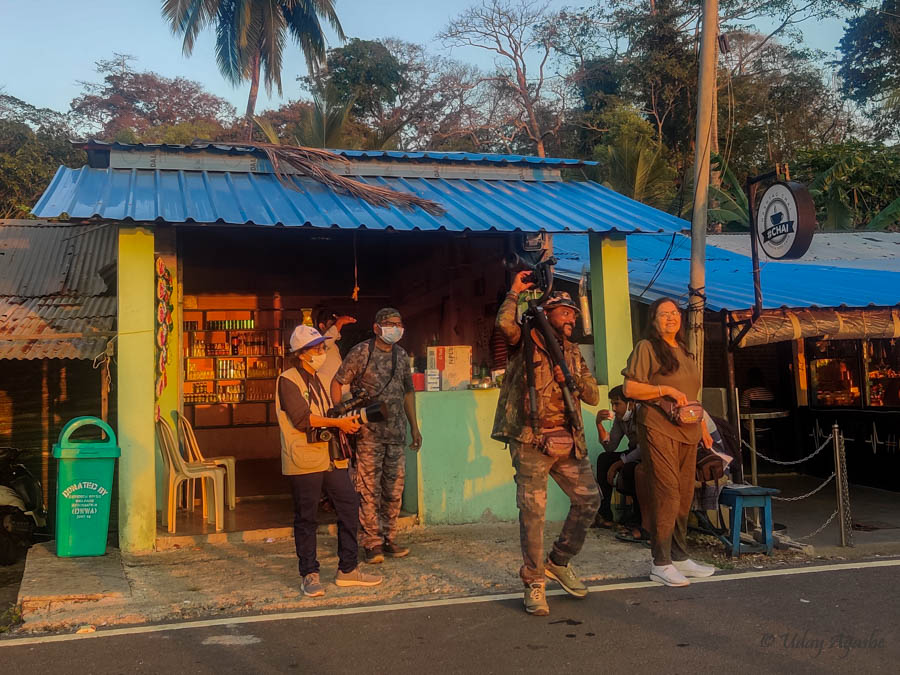
As it got dark, we went for the owl hunt. This place was not very far from the Chidiya Tapu park. After reaching there we got down from the vehicles and were on foot for the next hour or so. Luckily here we did not have to stray much into the jungle, the owls were seen close to the tar road. They seem to prefer the trees adjacent to the road
The Hume’s Hawk Owl seemed to be common over there and we could see 4-5 different owls during that time. They were relatively bold (in the sense that they didn’t fly away immediately on sensing the torchlight) and hence we were able to get some photos.
Jabili was on her mark and kept moving ahead in the dark without fear. All this while she was prompting us not to make any noise and move quietly. A little later, she waved us to come closer. She had found a pair of Walden’s Scops Owls. There were alert and did not remain in sight for long. It was a good experience to observe them though.
We also had the Andaman Scops Owl on our agenda but didn’t have any luck with that. We roamed a lot but there were no signs of it anywhere. Close to 8 pm, we decided to call it the day.
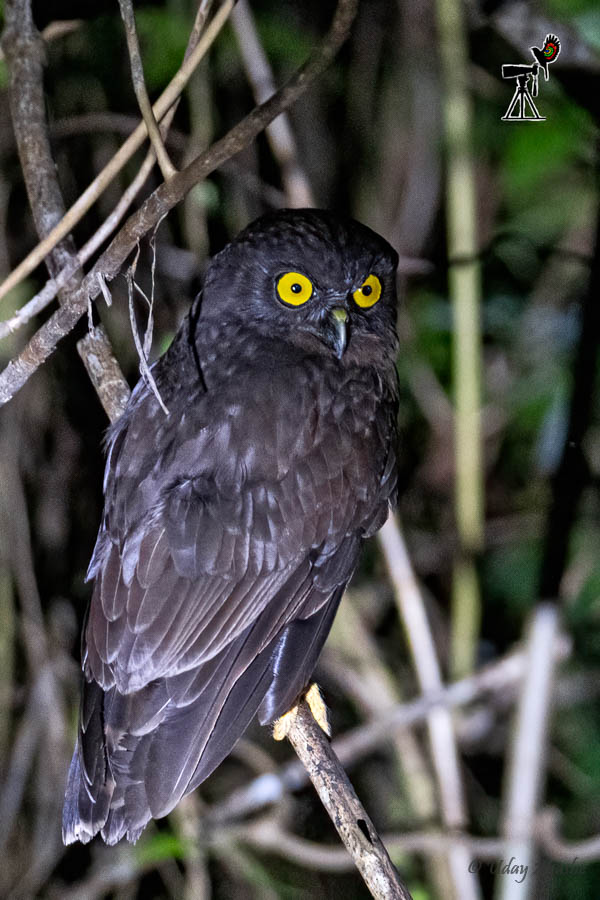
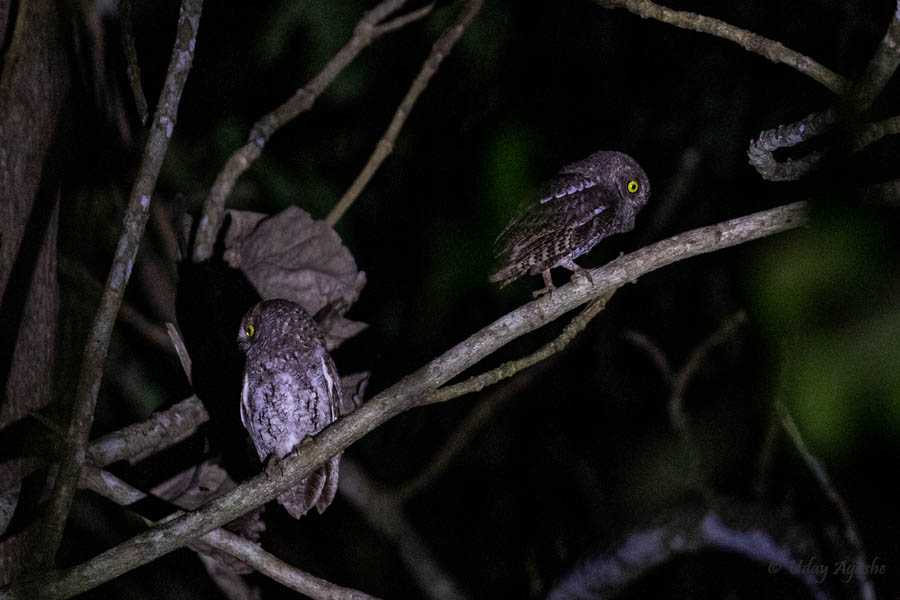
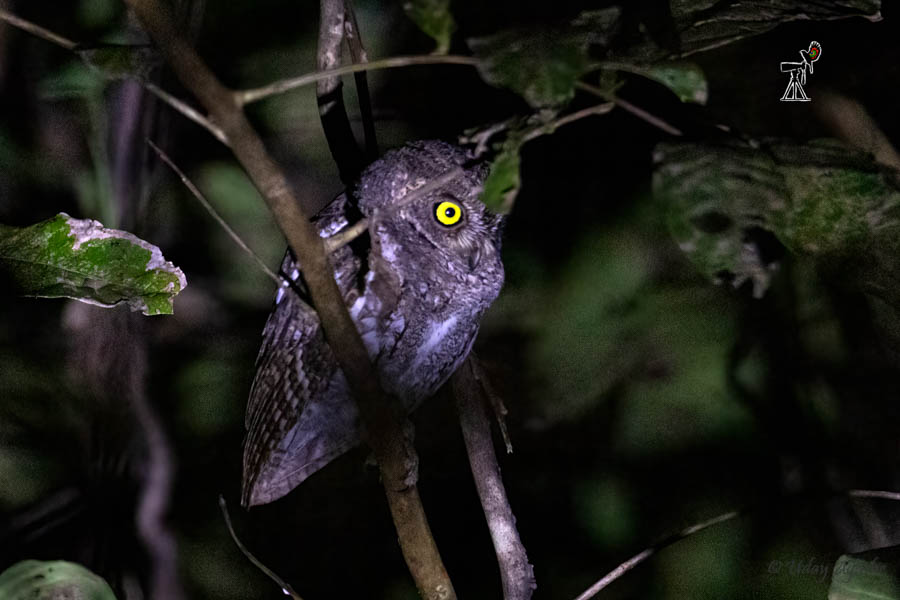
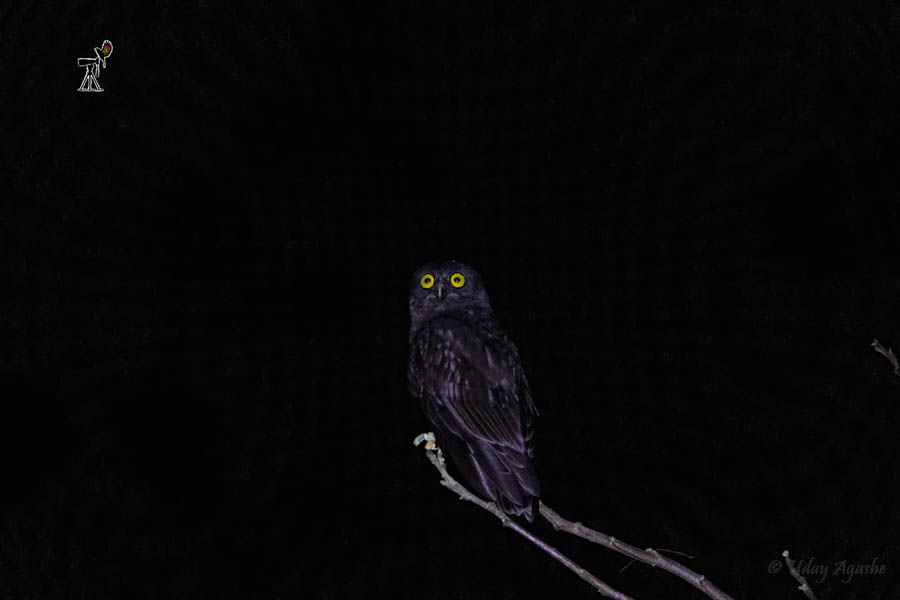
Here I will take the opportunity to touch on the topic of searching for birds in the dead of the night (or when it is dark). Left only to moonlight, there is no way we can find the owls although the local guides have a fair idea about their habitats. It becomes imperative then to use the bird calls to attract them. And despite using the calls, there is no guarantee that the birds will turn up when we want. The calls are used to increase the likelihood of finding them.
And even after finding the bird, it becomes necessary to use torch lights to get the photos. Here some of the good guides are very particular and they won’t use torchlight arbitrarily. They would use it just enough to have a photo or two and pay no heed to the photographer’s demand for more (we are generally never satisfied with the photo quality).
It is a tricky subject to decide what is ethical and what is not but I think most of the guides would be using this method of finding these rare birds (especially at night).
Day of Ferry Ride & Shoal Bay
Today we planned to visit the Shoal Bay area (the Kaalatang area of Shoal Bay). The best way to reach here is the ferry boat, it can also take the vehicles. As such it is not a separate island but getting there by road would end up spending 2 additional hours of travel time, and hence ferry is preferred.
We were told that the first ferry from the Haddo jetty (was close to our hotel – about 5 minutes drive) at 6 am, so we started from Hotel by 5:45. A couple of our participants decided to take some rest and join us an hour later. The ferry ride is about 20 odd minutes and from there we traveled a further 8-10 km to reach our birding spot.
Morning time is best for birding, as soon as entered we could hear a lot of bird calls. The first one was the beautiful Indian cuckoo (somewhat like the sound of Cuckoo-clock). We only saw the song but did not see the bird (must have been hidden in the trees). Once again, the birds were perched at height but we could see a few more birds here. Like yesterday, there were Asian Glossy Starling & Andaman Drongo but in addition, we could see the Black-naped Oriole, Andaman cuckoo shrike, Square-tailed Drongo-cuckoo, and White-tailed Starlings.
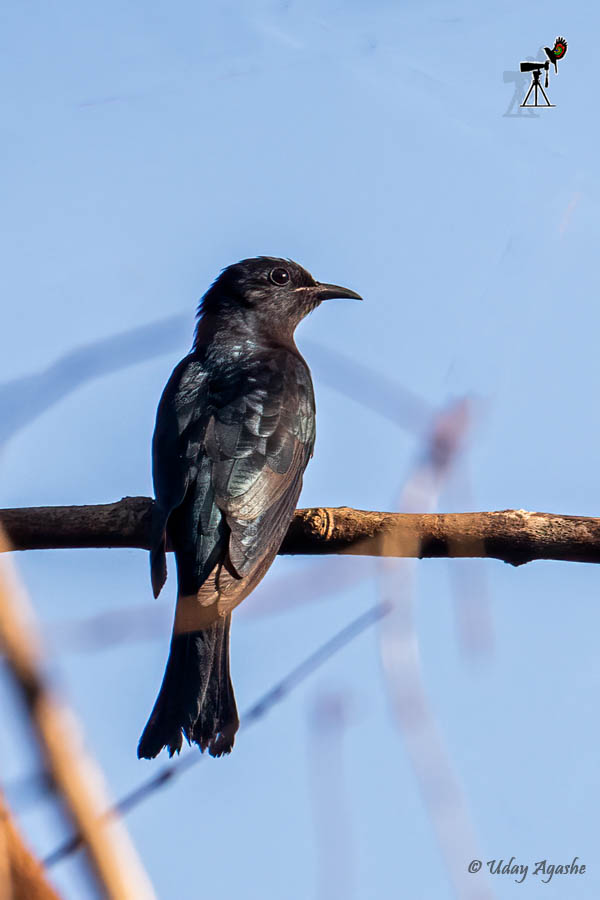
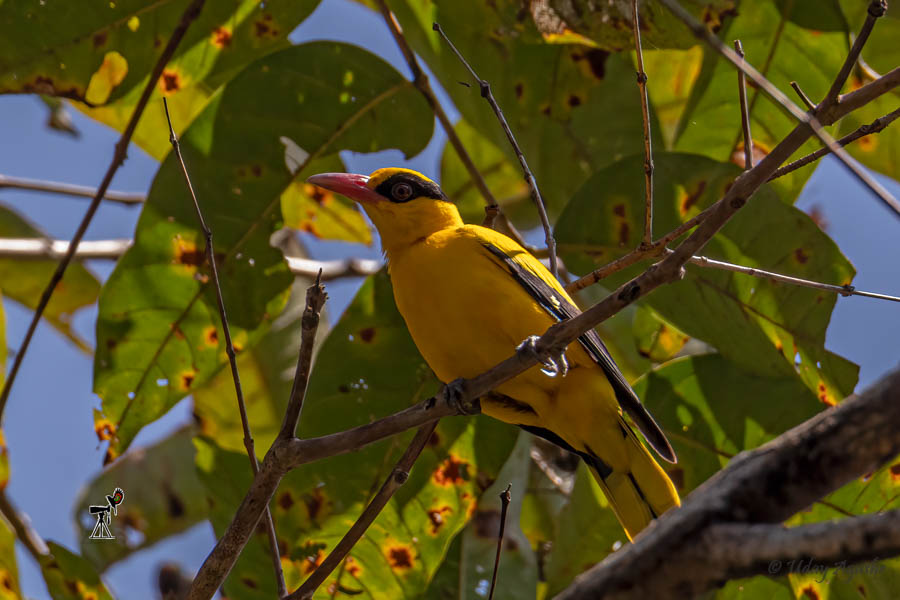
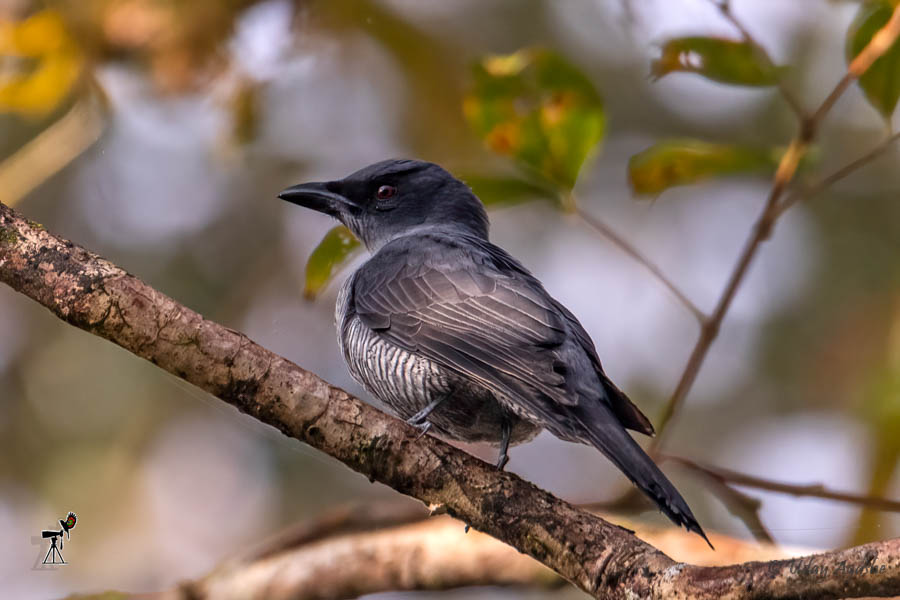
Here we saw the racket-tailed drongo with only one racket. There was another birding group ahead of us that day and we could see they were excitedly taking photos, we quickly moved close to see the pair of Andaman Cuckoo-Doves. Some scarlet minivets were also seen there. We then came across two Asian Glossy Starlings (there are like the mynas that we see but there are uniformly dark in color and carry a glossy look giving them the specific common name)
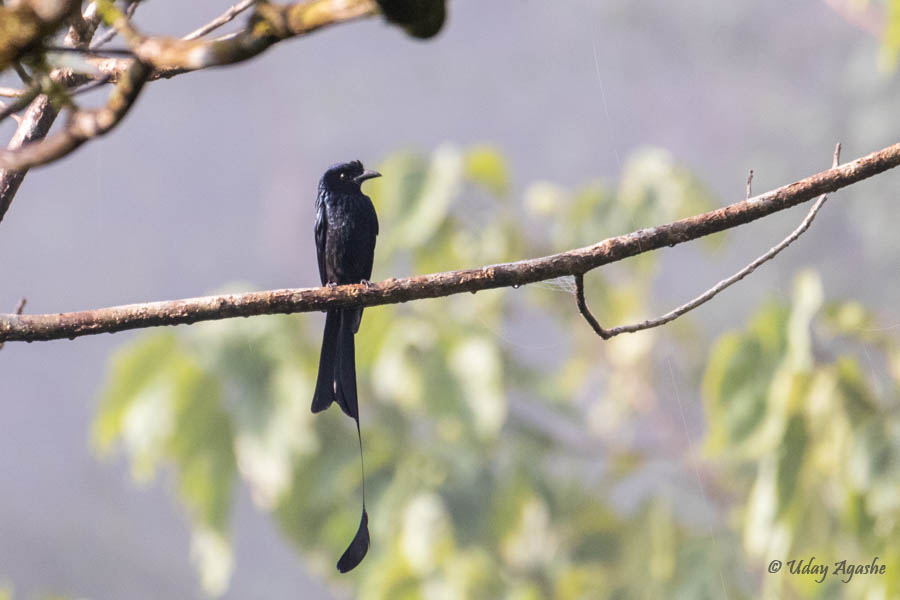


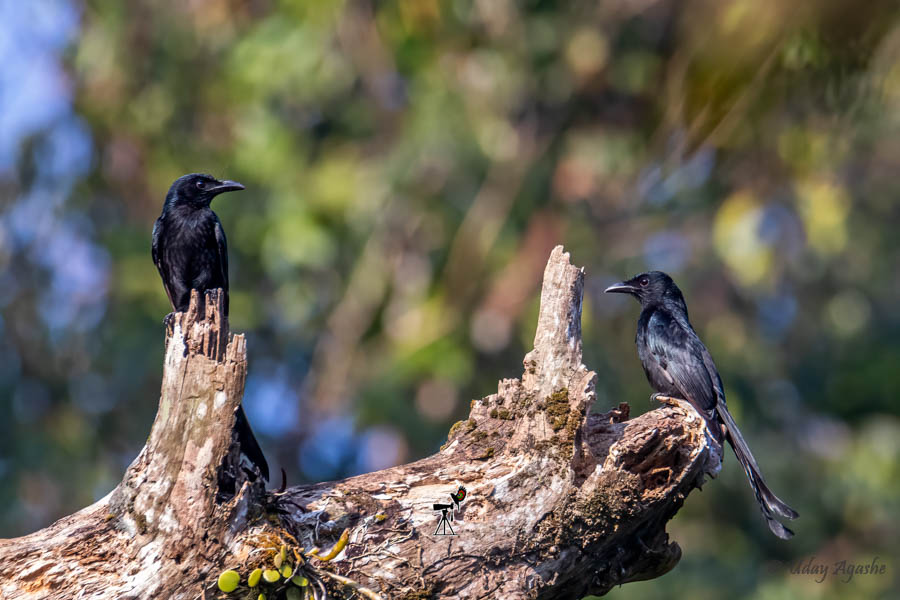


And all these birds were on the top canopies most of the time, I did have a headache because of constantly raising my head to look at them. Although while taking photos, we end up forgetting all the pain. But in the afternoon, I had to take medicine for vertigo. Just as we kept looking for more photo opportunities, Jabili told us about the arrival of the woodpeckers. Both varieties were seen nearby.


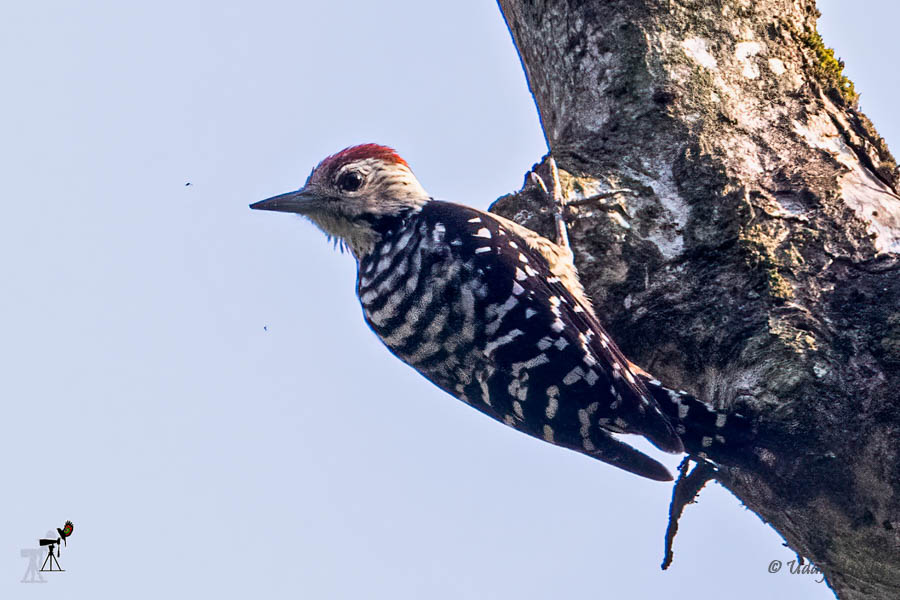
We spent a couple of hours there and then decided to move to a little different area (not very far). Here our attention was drawn first to the Vernal Hanging Parrot. Fortunately, it was not perched high on the tree but it still did not allow us to come close. Right next to it were 2 Chestnut-headed bee-eaters. After the parrot, we were able to photograph them as well.
Jabili then pointed us to another minivet, it was much duller in color compared to those species that I had seen earlier. This happened to the be Ashy Minivet (another of the Andaman endemics). Close to it was a small flock of the Asian Glossy Starlings.
By then, Abhay was frantically calling us towards a small bird. It was well camouflaged in the tree and was far from us too. But when he showed us the photo, Jabili could identify it as the elusive Violet Cuckoo. We missed the opportunity to see it as by the time we got its correct location, the bird had flown inside the jungle.
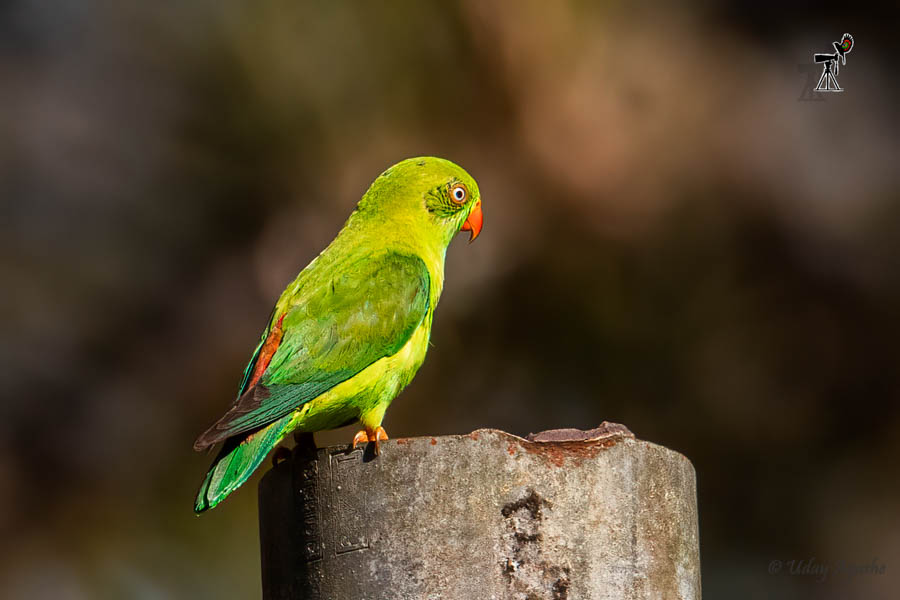
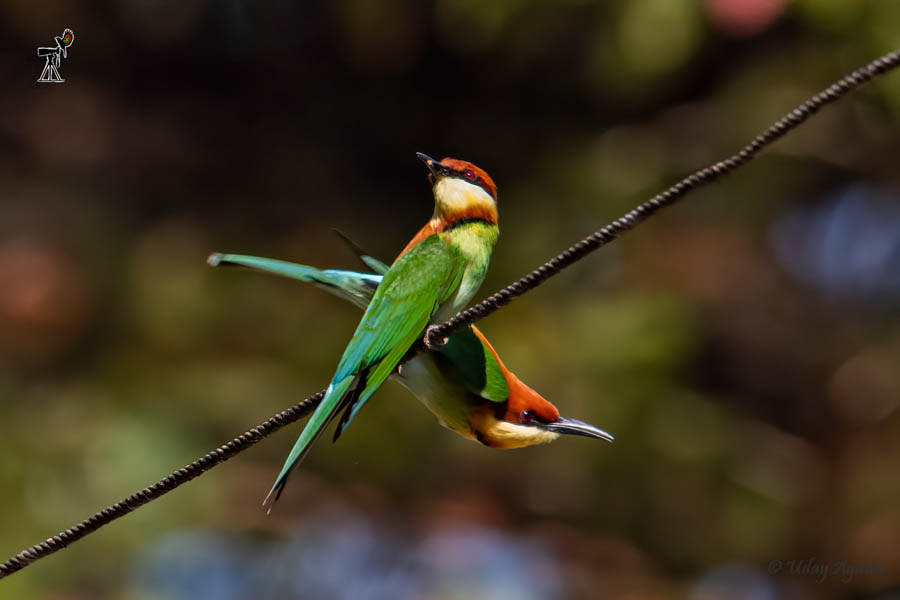
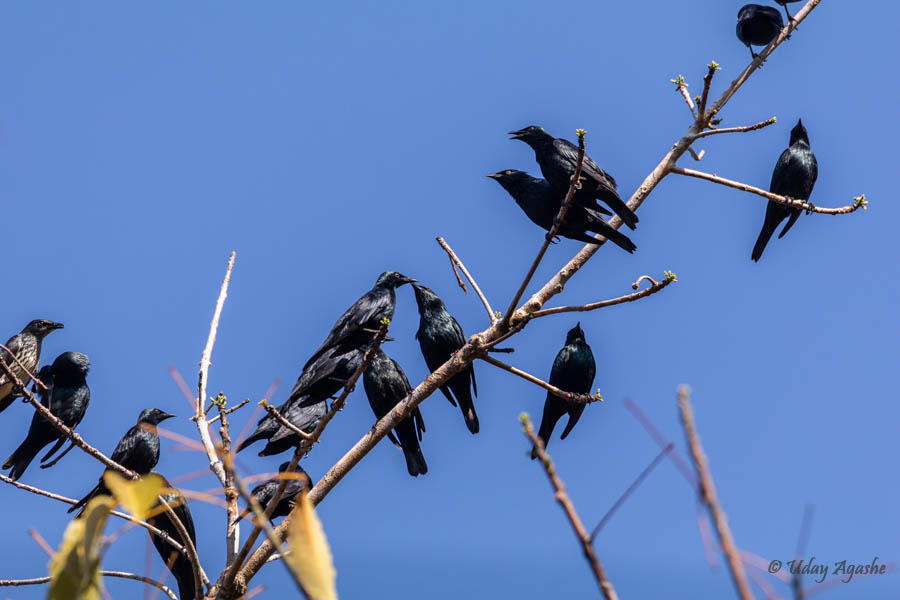
It was time for breakfast then. As the area is remote and there were no facilities nearby, we had already carried the breakfast from the hotel. As we were having breakfast, the guide showed us the Andaman Green Pigeons perched on a faraway tree. Since it was the first time we were seeing it, the distance didn’t matter. We at least had to get a record shot of it (and with that distance, getting a good photograph was impossible anyway).
After breakfast, we once again turned towards our morning birding trail. It was about 10 o’clock and with the increasing heat, the bird activity has reduced drastically. Just a couple of hours earlier the place was bustling with activity and now the silence. But it was not zero though. We did see a few different birds. One was the Dollarbird. It gets the peculiar name based on the dollar coin-like spots that one can observe on their open wings (when they are flying). There was the Asian Fairy Bluebird on one of the branches. Just then, Abhay could also spot a flying bird that looked like a bird-of-prey. It was the Black Baza.



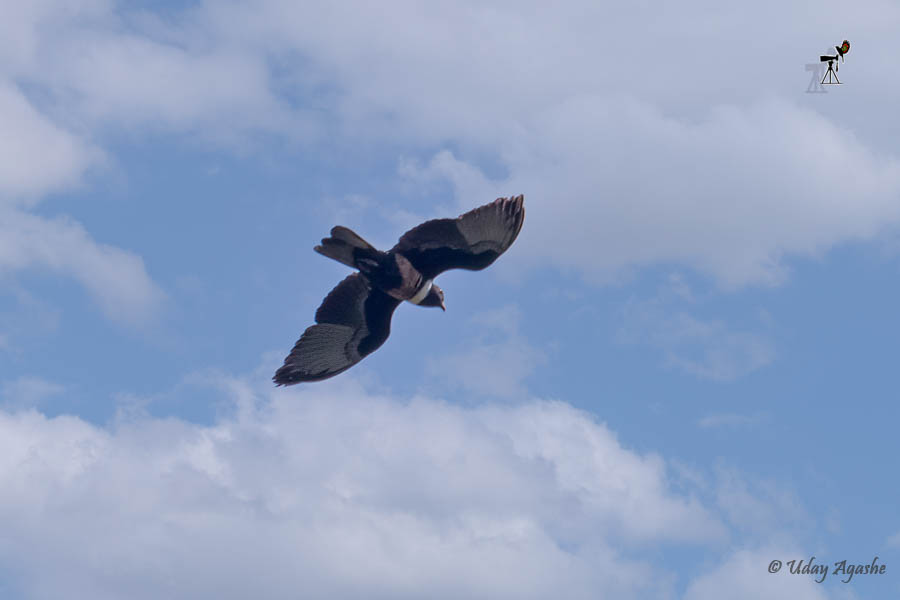
As there was not much activity, we decided to return. But the main attraction of the trip was still on the agenda. It was the beautiful Ruddy Kingfisher. On the way back, we stopped just before the mangrove patch and got down from the vehicles. From there for the next 200 odd meters, we searched for the elusive kingfisher. All eyes were searching for the ruddy/brown-colored object but there was nothing but the mangrove roots for most of the time. As an exception, we could see a Changeable Hawk Eagle and Crested Serpent Eagle perched on a far-off tree. But just as we were losing hope, Jabili asked us to keep quiet and come to where she was standing. Yes, it was there! We could all see the beauty hidden in the leaves. Next few minutes we struggled with our camera settings, trying out different positions (just to get a better angle for the photo as most of the bird was in shadow and had a lot of clutter) to get the best possible shot. Got only a few minutes but it was like the trip was already successful.
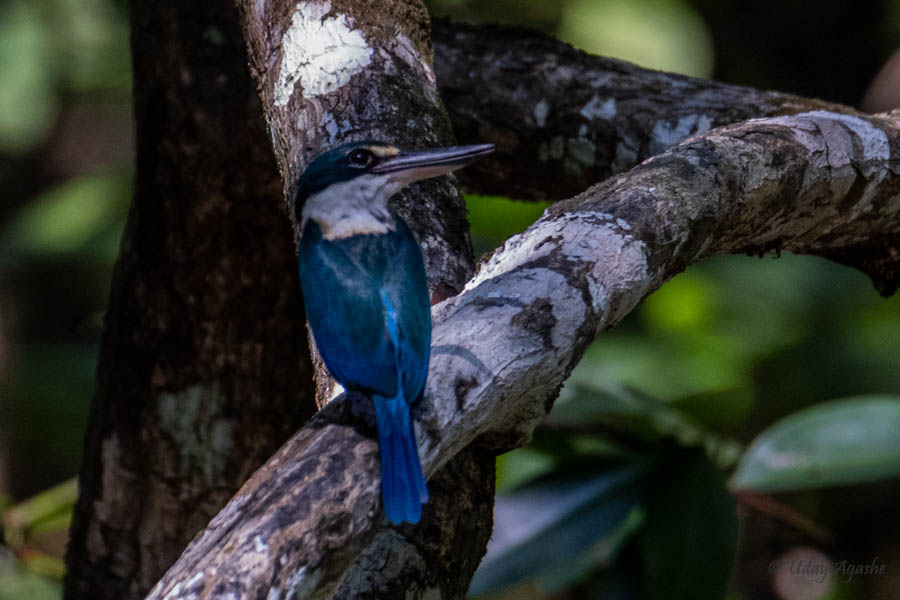
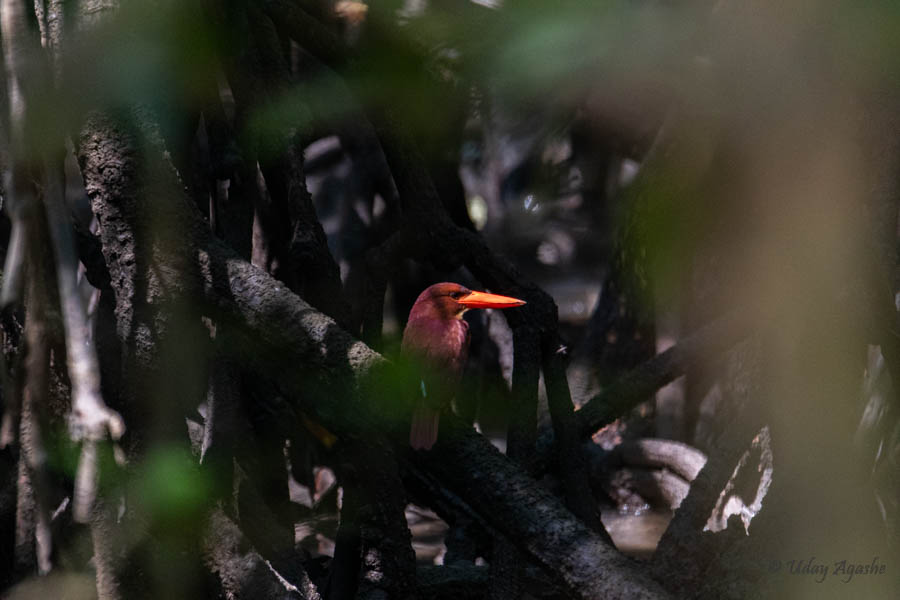

On the way to the jetty, we saw a pair of White-bellied Sea Eagles. I think these eagles are abundant on these islands as we could see them on almost all days. And that was obvious because their preferred habitat is the coastline and that was everywhere.
By 11:30 we were back in Hotel, once again we planned to start the afternoon trail by 2:30 and will be going to the same place as yesterday (the pending owl was the target along with the Andaman Nightjar).
We once again saw the Reef Herons on the beach. This time we could get the pair in one frame (the special thing with the pair was, they both were of entirely different morphs.. one of them was charcoal grey/black and the other was White. On the beach, we also saw a nicely perched Sea Eagle.
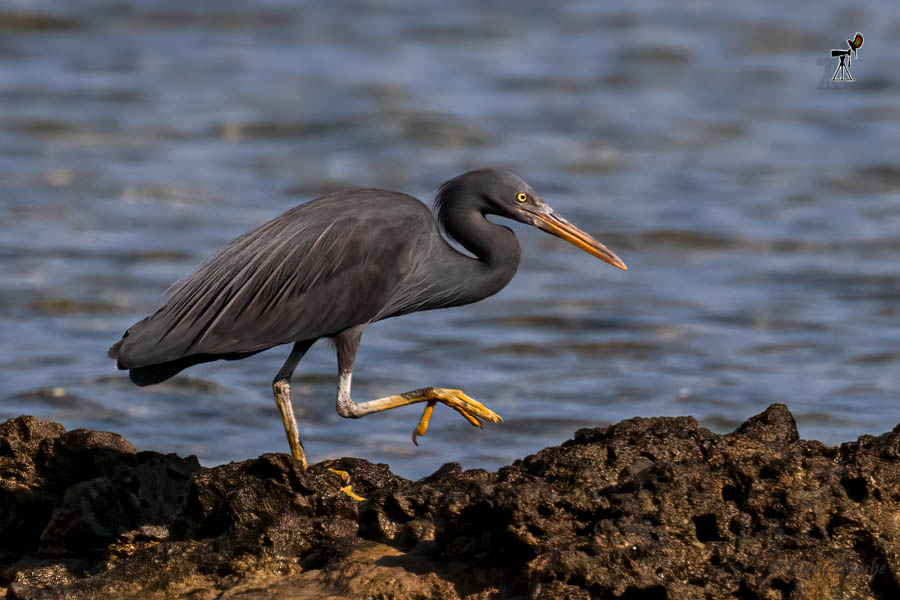


Instead of getting inside the park, we decided to roam in the nearby areas. Went also through a paddy field on the way, where we managed to see a lifer, the Amur Stonechat (or Stejneger's Stonechat). Other than there were only the usual red-collared doves and other common birds.
Before going for owls, we once again had a tea break (with Bhajias obviously). As it became dark, we set foot for the Owls but the Andaman Owl was once again not visible. After that, we decided to go for the nightjar. This was another part (within the Chidiya tapu region only) that was in the jungle but there were some open areas as well. We searched a lot for the Nightjar but even here there was only the disappointment for us today. But such things are part and parcel of any birding tour. Some days you have luck with you and some days you get nothing. If nothing else, you just enjoy the silence of the nights (it is a completely different experience to be in the jungle with no light around and not many sounds either). But on the whole, we had seen about 20 new birds (lifers) in these 2 days.
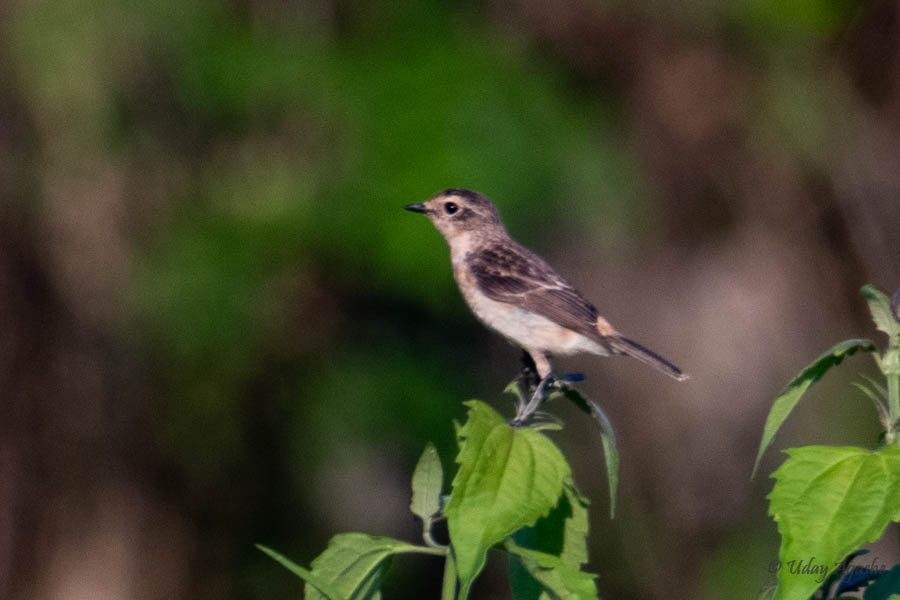

Day 3: Seeing the Andaman Teal
Today we decided to visit the Chidiya Tapu area in the morning hours. On the way, there was a small ghat section. Here our guide was expecting to see the Andaman Serpent Eagle and Andaman Treepies. We once again got down from the vehicle and started looking for the birds on foot (there was not much vehicular traffic on road, but we were carefully keeping to the side of the road to avoid the honking by the occasional vehicles). But we had no luck with eagles, had to be content with only the Scarlet Minivets playing on the edges of those tall trees.
On reaching our final destination, we once again took to the road on foot. There was a little bird activity but they were not coming out in the open. As an exception, some of us did have a fleeting glance at the Andaman Shama. But it was so shy, didn’t even allow us to take out our cameras.
Just then someone saw a largish bird flying at some distance. It then perched on one of the trees. Jabili confirmed it using her binoculars that it was indeed the Andaman Serpent Eagle. But it is so well hidden in that far-off tree, we all really struggled to get its exact location, and then by the time I pointed my camera in that direction, it had already started flying.
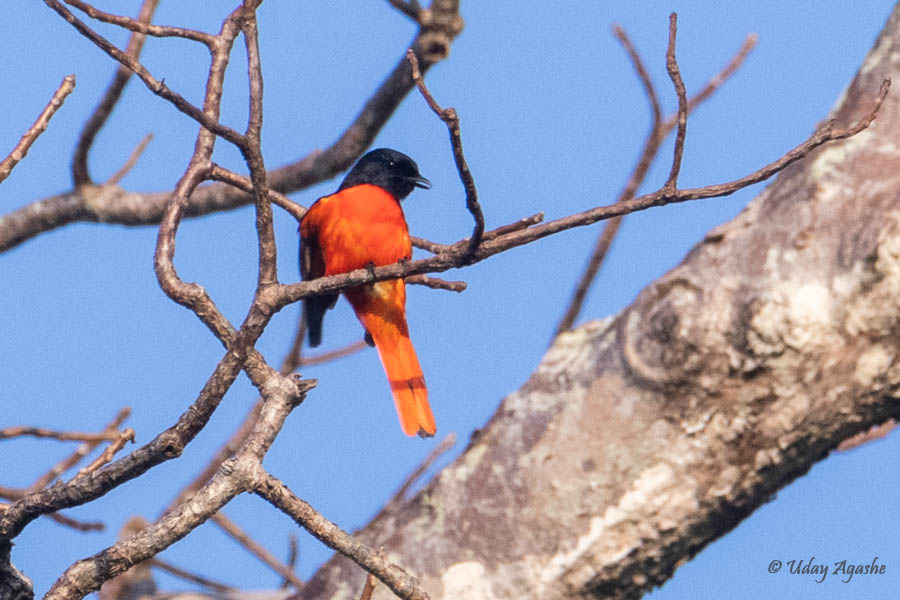
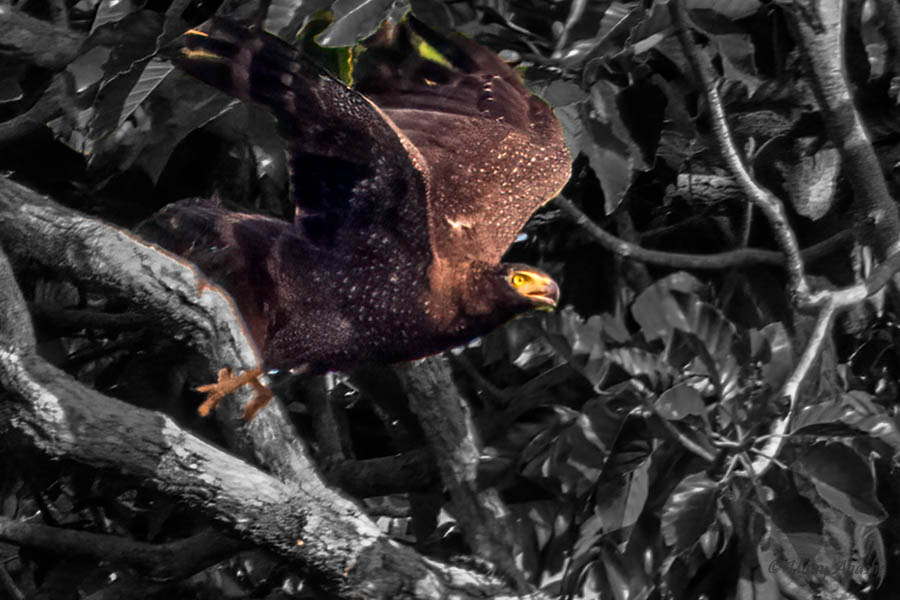
Little ahead, we could hear a small flock of birds with little loud calls. They were the Andaman Treepies. And once again, they decided to perch on the top branches (we could hardly see them through the leaves/branches)


As we were returning, Abhay once again spotted the Violet Cuckoo. And this time, there were not 1 not 2 but 3 cuckoos on display. That created a lot of excitement in the group as we didn’t want to miss clicking this cuckoo again. We all struggled to identify the bird from the clutter and finally managed to get a few clicks.
Then as we were passing the lovely blue waters of the Pacific, we saw a Sea-Eagle circling above our heads. It looked like a mature bird with nice white plumage (the juveniles typically have a darker shade on the belly and even the edges of the tail). We did get a good photo of the juvenile later.
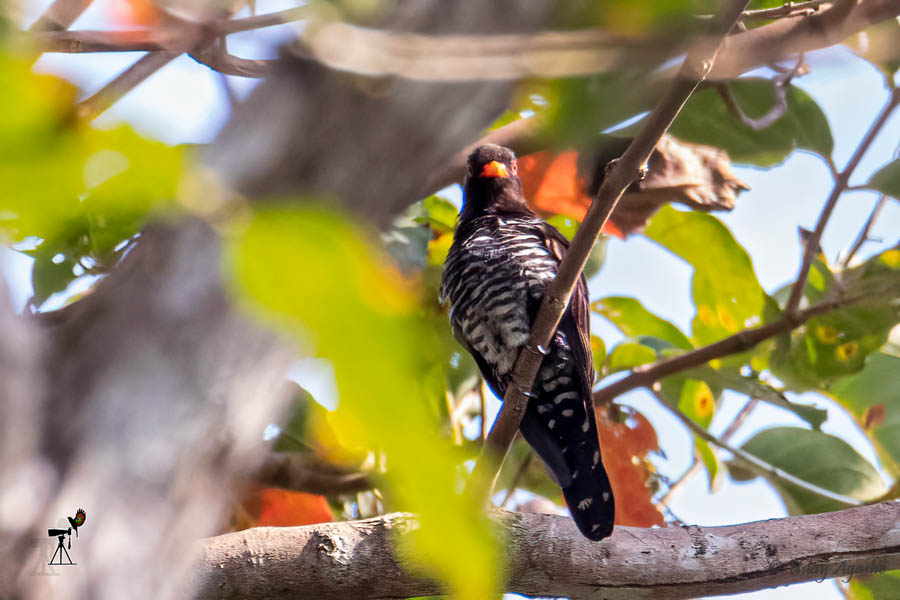
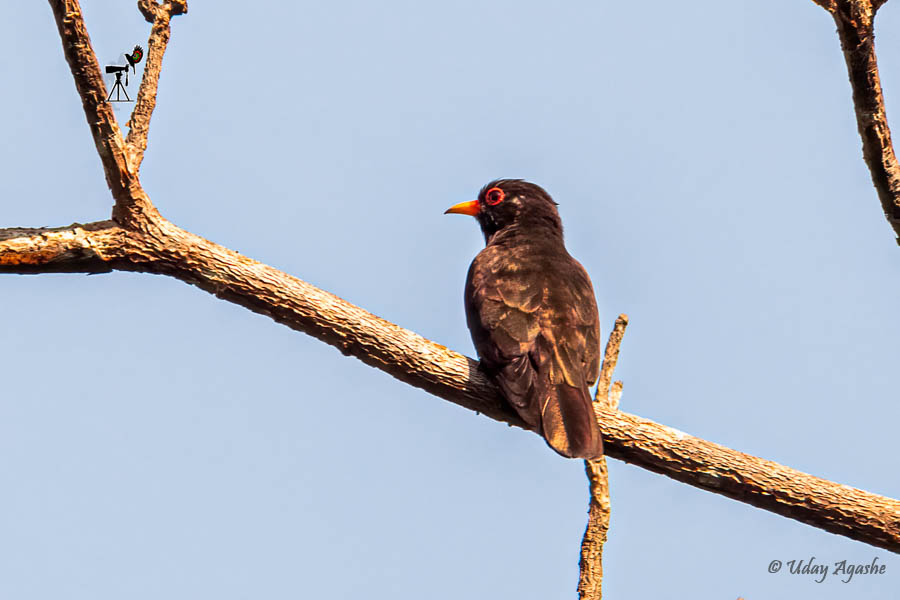
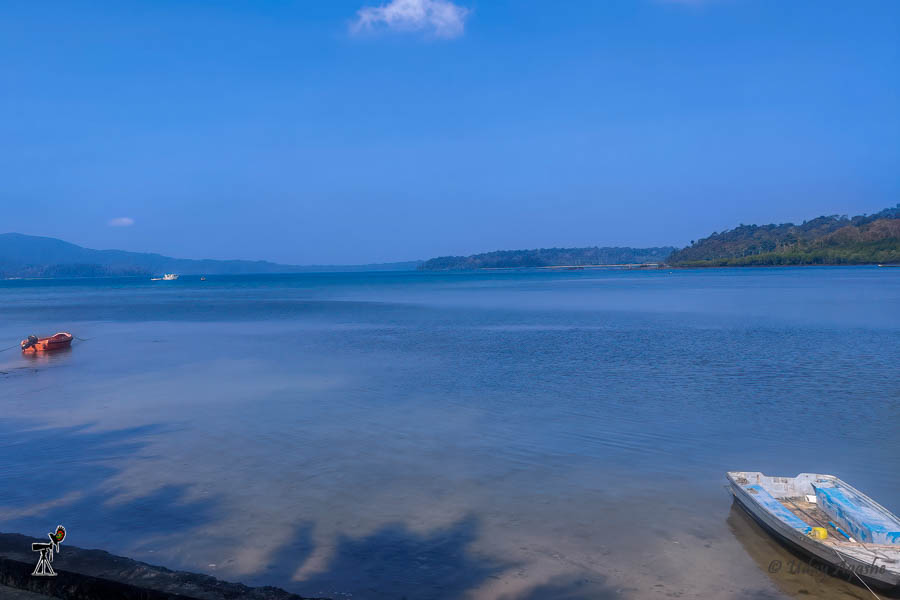
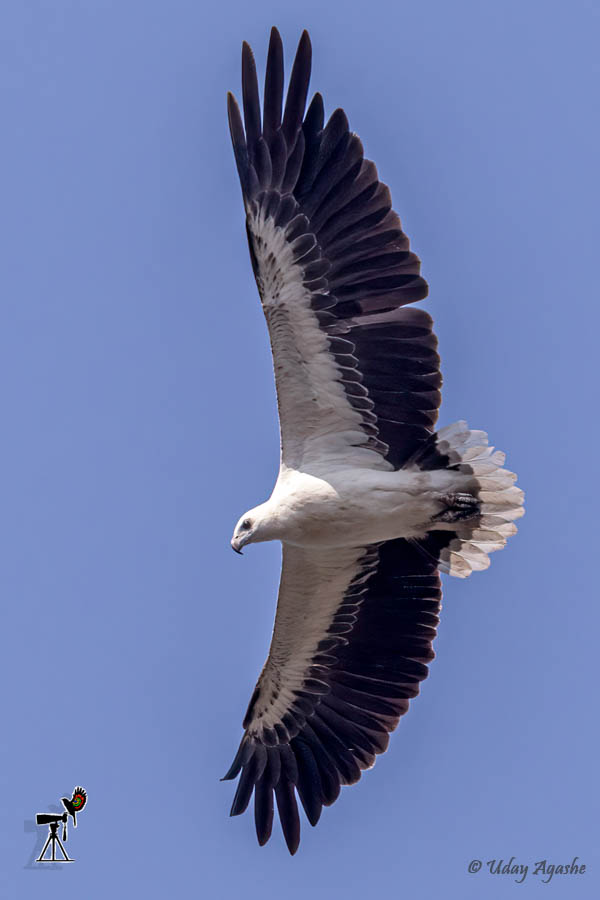
Before returning to the hotel, we decided to have a round of the Chidiya Tapu park. Took a different path this time. As it was nearing noon, the bird activity was down. Here we saw a few cages (where they keep the injured birds for recovery) and found the beautiful Nicobar Pigeon inside one of them.
In the park, we also saw a pair of White-throated Kingfishers. If you notice, in one of the pictures the kingfisher’s eye looks different. It is showing the nictitating membrane (a semi-transparent layer protecting the bird’s eye from objects like dust particles). As it is semi-transparent, they can still see through it a bit. I think most of the birds have this layer and especially the Birds of Prey (Eagles, Falcons, etc.).
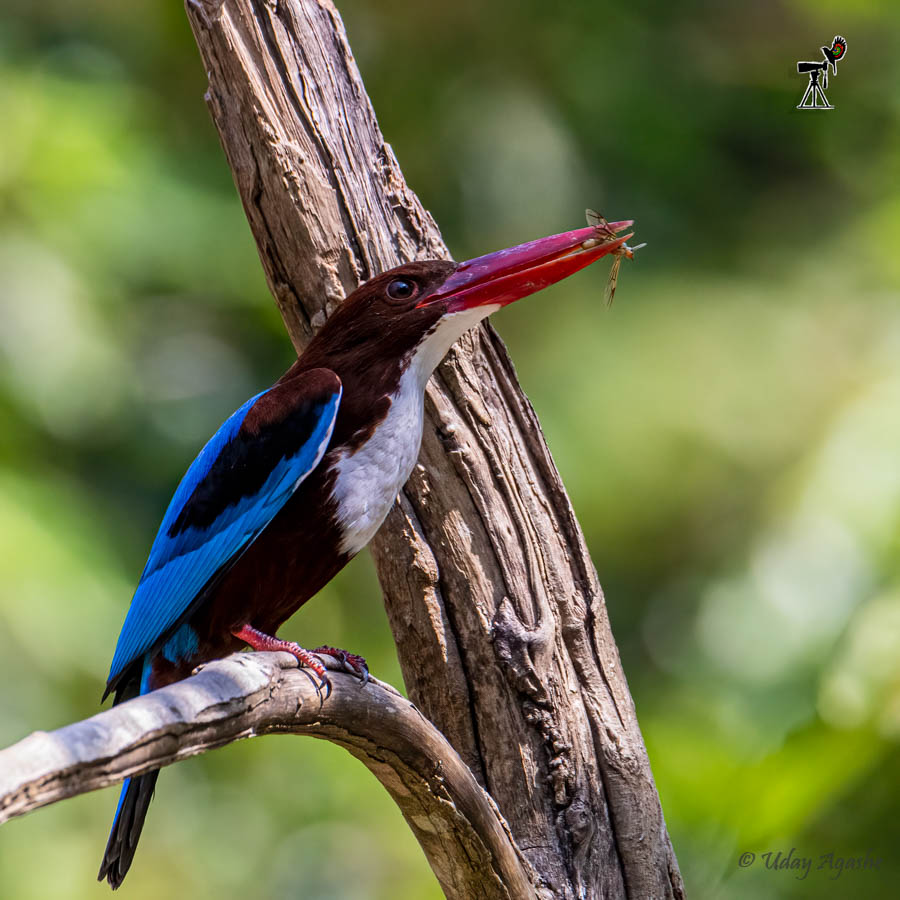
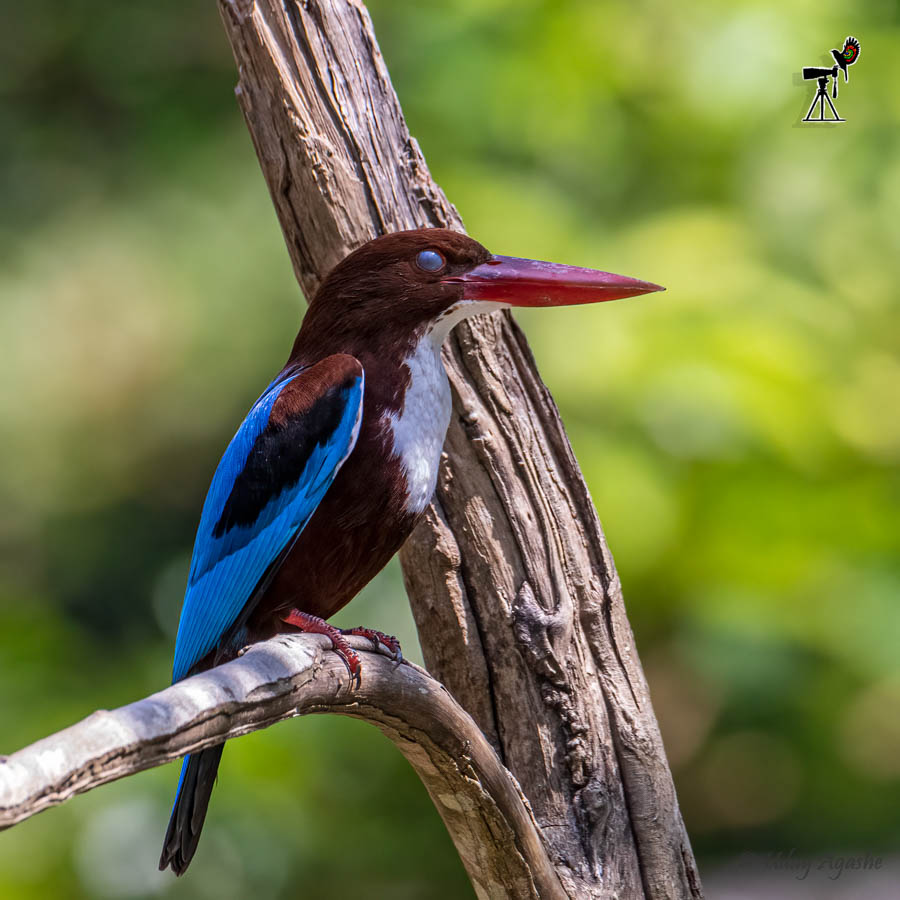
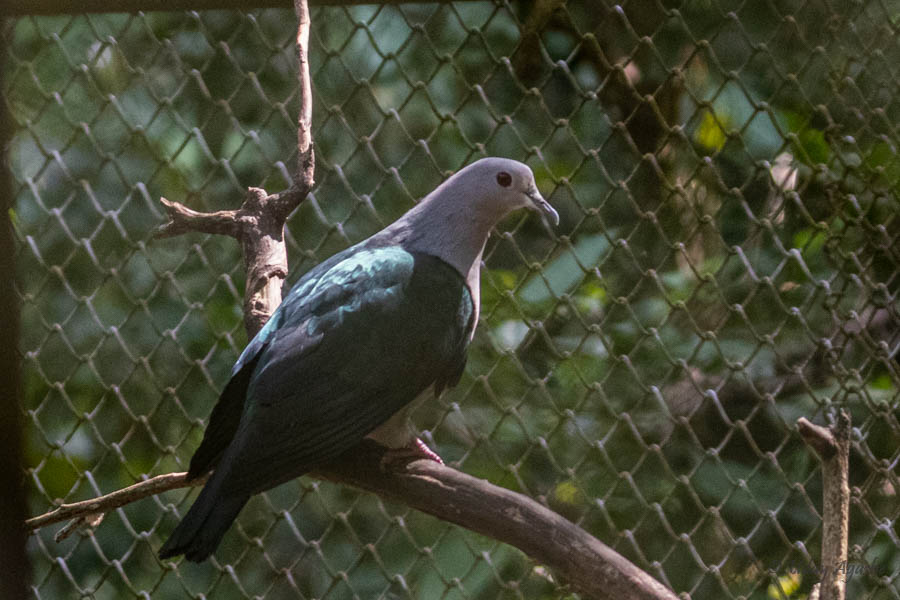

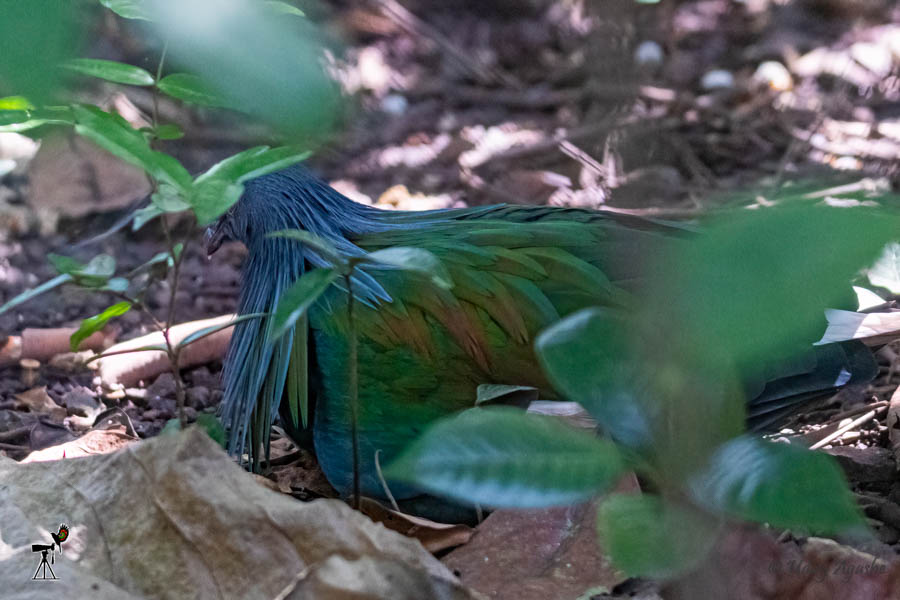
Our afternoon plan was to visit the Ograbraj area. On the way, we were passing through Sippi Ghat. There were so many small lakes that we could see from the road. Our guide then told us that all these were the results of the Tsunami of 2004. This was all plain land earlier but now seen as lakes.
We then stopped near one of the lakes and Jabili took us close to the edge of the water. From the distance, we could see a lot of ducks on the water (there were other birds as well). All of them were the Andaman Teals (one of the endemics of Andaman). Slowly we approached the birds, carefully walking (crouching) on the grass. But there was so much disturbance in that area that the birds were probably not bothered by our movement.
The noise was caused by the dumpers coming regularly with debris for the landfill operations. I think the government is currently reclaiming the land that was submerged in water during Tsunami. The danger with that is these wetlands may not exist in the future and thereby goes the opportunity to see these birds here (hopefully they will find an alternate habitat).
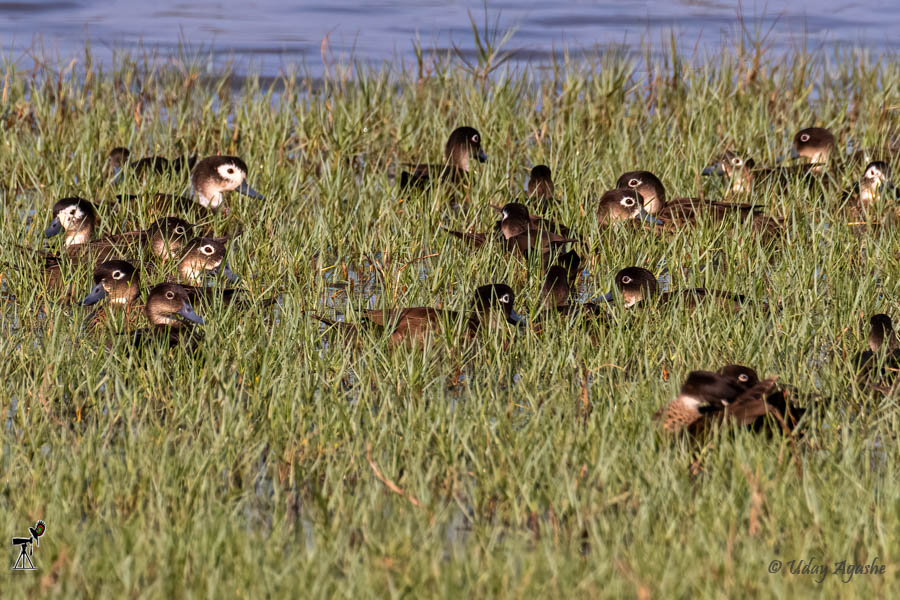
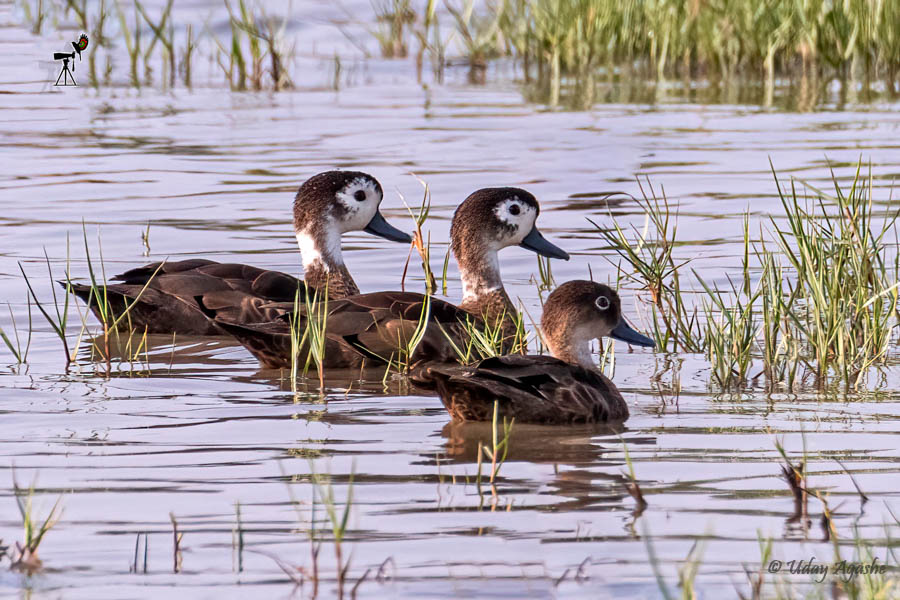


We spent about an hour there and all of us could get decent photos of the Teals. From there we moved to the mangroves area. One of our targets was the Ruddy Kingfisher again but we would also be looking for the mangrove whistler there. So for the first 10-15 minutes, we looked around for the kingfisher and then went for the Whistler. This was a little difficult task as we had to walk inside the mangroves by wading through the mud. Even after all these struggles, we could not see the whistler. We even tried by playing the calls of the bird a couple of times but nothing.
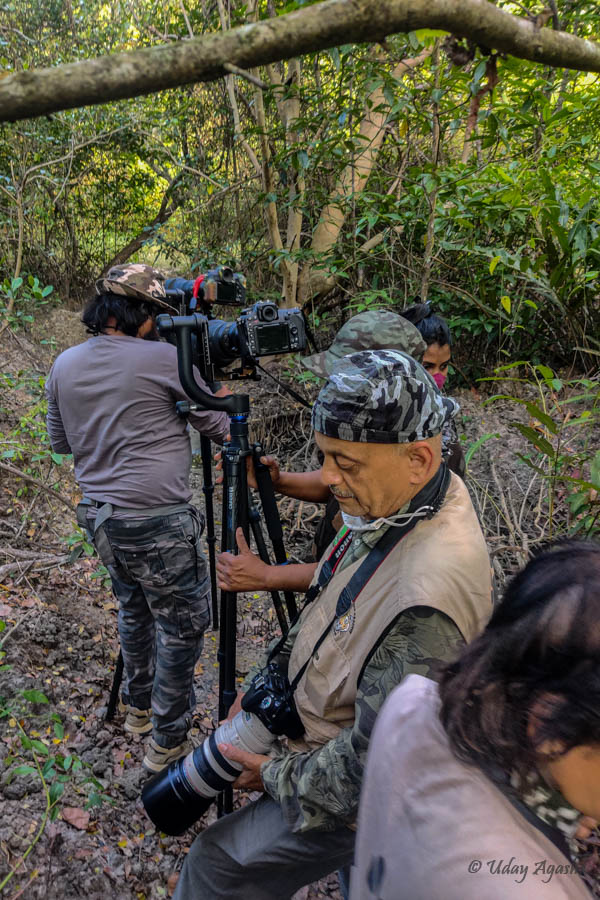

We then moved towards a small grassland area (covered on 2 sides by water bodies). It was close to sunset but we could see some bird activity on the grass. These were the Eastern Yellow Wagtails. There were also some warblers at distance and a few plume-toed swifts hovering in the sky. There was a lone tree on the grass that was occupied by 2 Blue-tailed Bee-eaters. By the time we went a little closer for the photo, one of them had already flown away. Looking at the activity we made a spot decision of visiting this place again in the morning tomorrow (as now the light was low and on mornings you normally see more bird activity anyway).
Before moving away, we had made a snacks plan for the evening. We were carrying readymade Bhel mix and had also got some onions, tomatoes with us from the hotel. As the sun was going down, we had that nice Bhel (the only thing missing was the hot cup of tea)
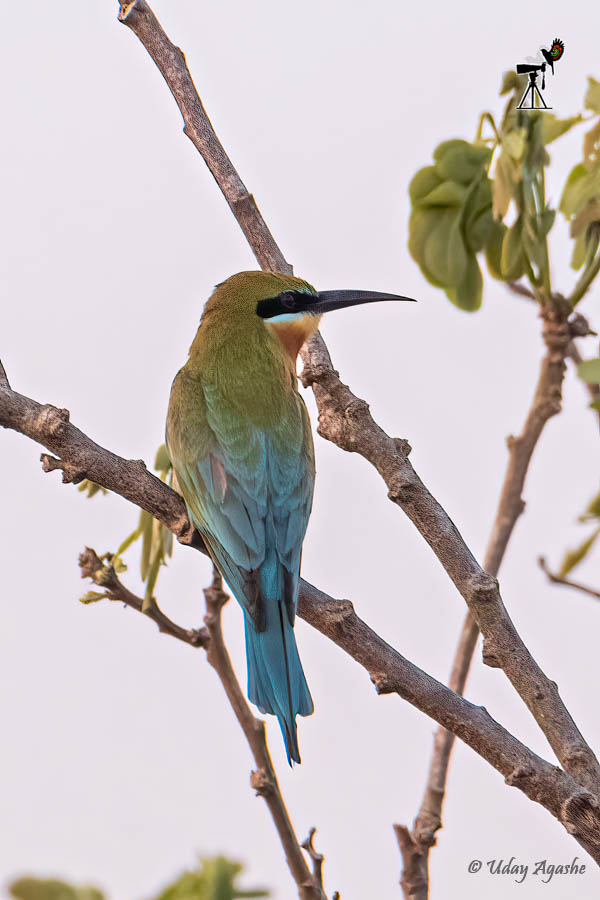
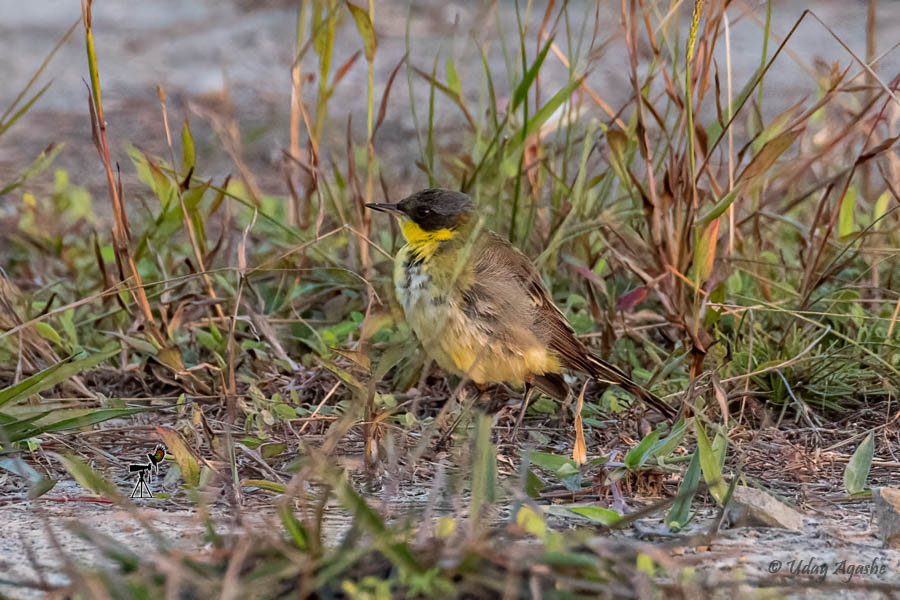
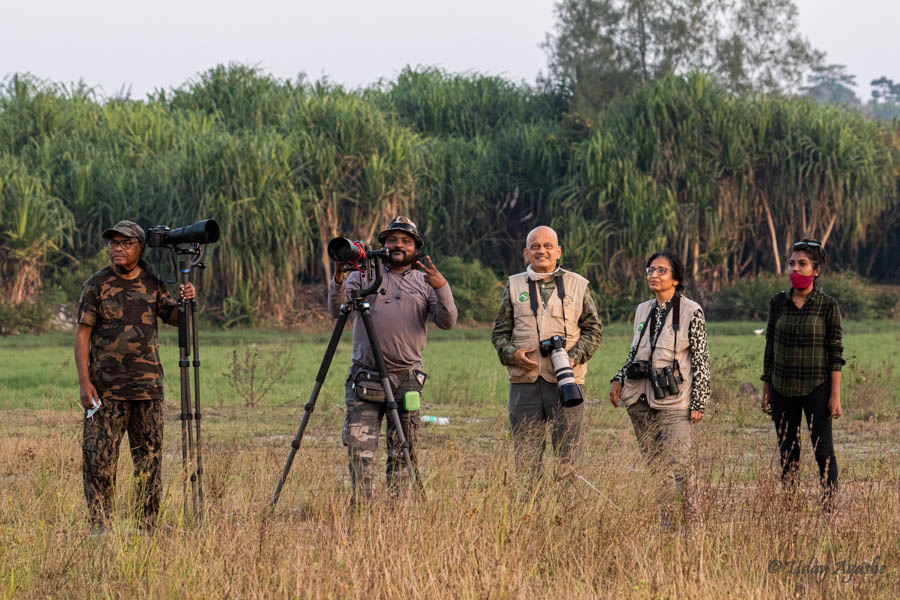
Oh yes, and our day was not over yet. We had one more owl to see (at least planned to see). We now headed towards the Bathu Basti area and we suddenly had a stop at a school gate. This wasn’t a jungle but a school gate well inside the city. As soon as we got down, Jabili started running into the school building crossing a few corridors and a couple of us followed suit. But we were probably too fast there and others had no clue which direction we went. This caused confusion plus some noises (asking for directions) but within 5 minutes we all settled at one corner. It was dark there but Jabili had already identified the spot where the Owl was standing (on the way, she had already switched off the lights in that corridor), so she gave us a rough direction where to point our cameras
As we all were ready, she lighted her torch for a few seconds and allowed us to take a few photos. The process was repeated just a couple of times and then she suggested we move out (and not disturb the owl). The owl that we had seen here was the Andaman Masked Owl (probably a distant cousin of our homely Barn Owl – very similar in look but a little smaller in size and slightly darker shade of brown).
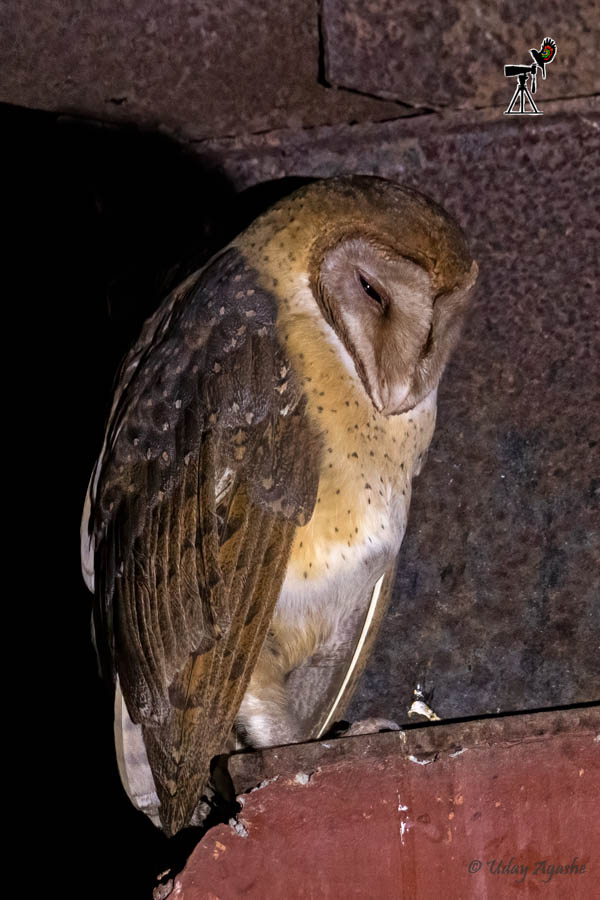
Day 4: Back to Ograbraj Grassland
As we had already planned, we headed straight to Ograbraj in the morning hours. Frankly, I was not very hopeful about this session but was expecting to see a couple of new Warblers.
As we were entering the area, we saw a crow size bird at some distance that looked like the Andaman Coucal. Got a couple of photos of it without getting out of the vehicle (and that was the right thing to do because the moment a door was opened, the bird flew away. Once again the first bird on the scene was Eastern Yellow Wagtail. Close to it was another pipit-like bird. Jabili confirmed it to be the Red-throated Pipit. That means a lifer was added to my list, definitely a good start for the day. We could see some bird activity on the grass as well as in the shrubs at the far end. Jabili was already looking at them through her binoculars and she quickly started rattling out the names Dusky Warbler, Black-browed Reed Warbler, Oriental Reed Warbler… and you know what, all were lifers for me!! A little later we saw the Philippine shrike as well (initially I thought that was a lifer too but then was told that it is a subspecies of the brown shrike).
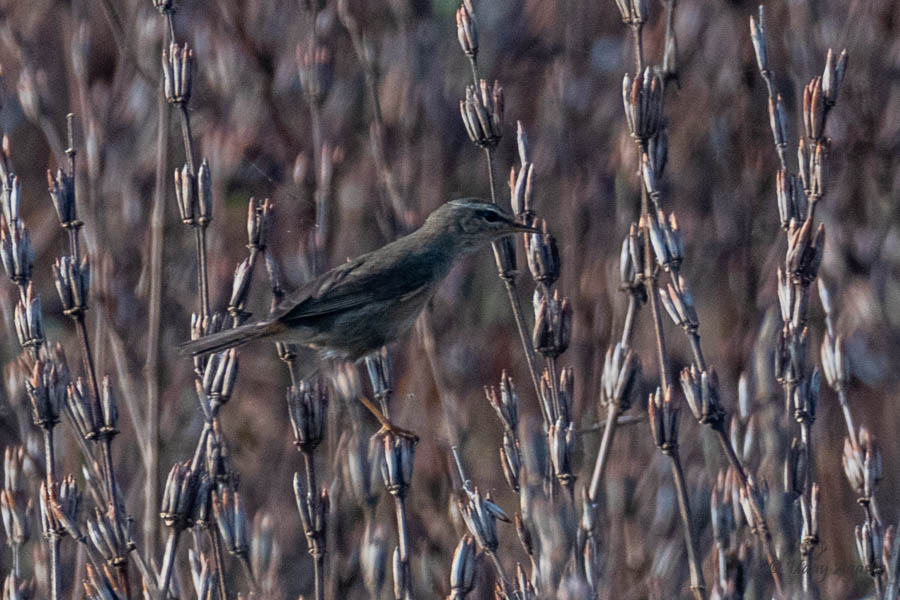
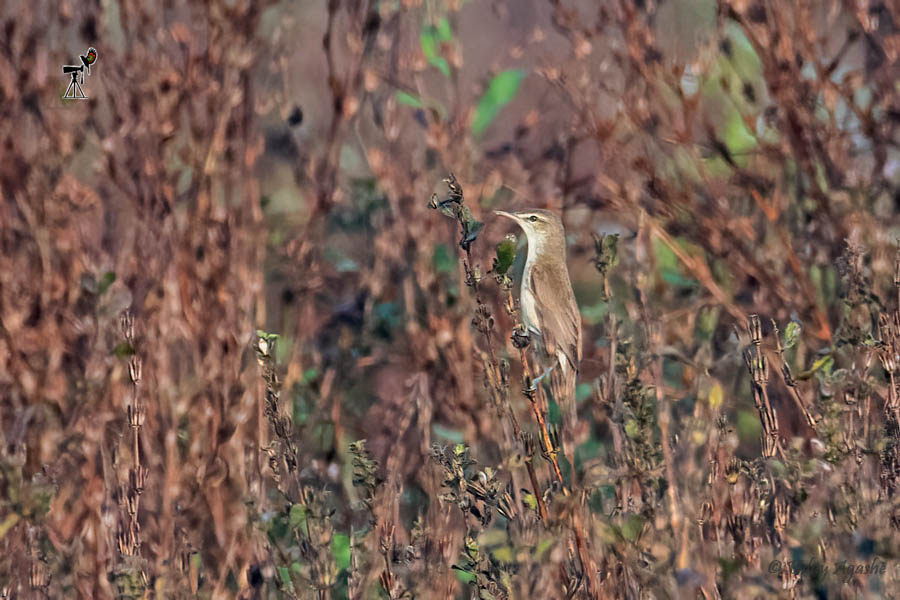

After spending enough time with these birds (and they were not coming any closer, so there was no possibility of getting any better photos), we move on towards the water body. We took the small path that was going thru the water body. As we entered, we noticed a Yellow Bittern at the far end. It was slowly walking on the grass along the edge of the water. As usual, there was this initial confusion about showing its exact location to all participants but we all managed to see it in the end. As we were watching the small Stint-like birds in the water, Jabili gave their identification as Long-toed Stint & Red-necked Stint. Just behind them, we also saw a Pin-tailed Snipe. While this was happening on the water, in the sky there were these White-nest Swiftlets. Also known as Edible-Nest Swiftlets, they get this name because their nests are made entirely out of their saliva and therefore edible for humans (the nest soup is apparently a delicacy in China).
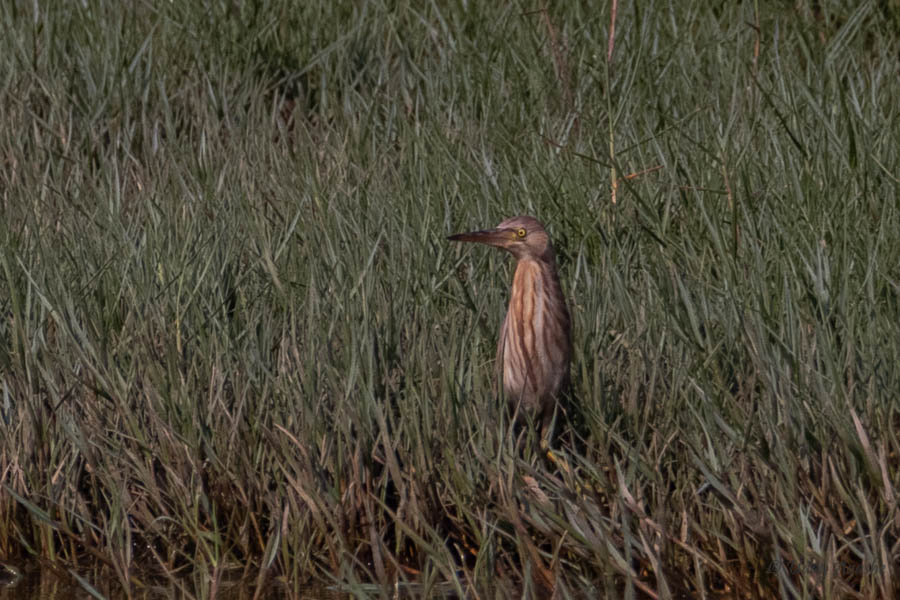



As we were trying to photograph the flying swiftlets, we saw a White-bellied Sea Eagle. This one was definitely a juvenile bird based on its coloration. You can even compare this photo with the photo of the adult bird seen earlier in this blog.
While returning to our vehicles, Jabili asked us to take a few photos of the Red-whiskered Bulbul. At first, I was reluctant (it is a very common bird that we see in our cities as well) but this one was looking different. The crest on its head was white, this must be a leucistic individual (lacks melanin & other pigments in the feathers thereby giving it no coloration).
Overall the morning birding turned out to be an excellent one. Out of nowhere, I was able to see 7 lifers.
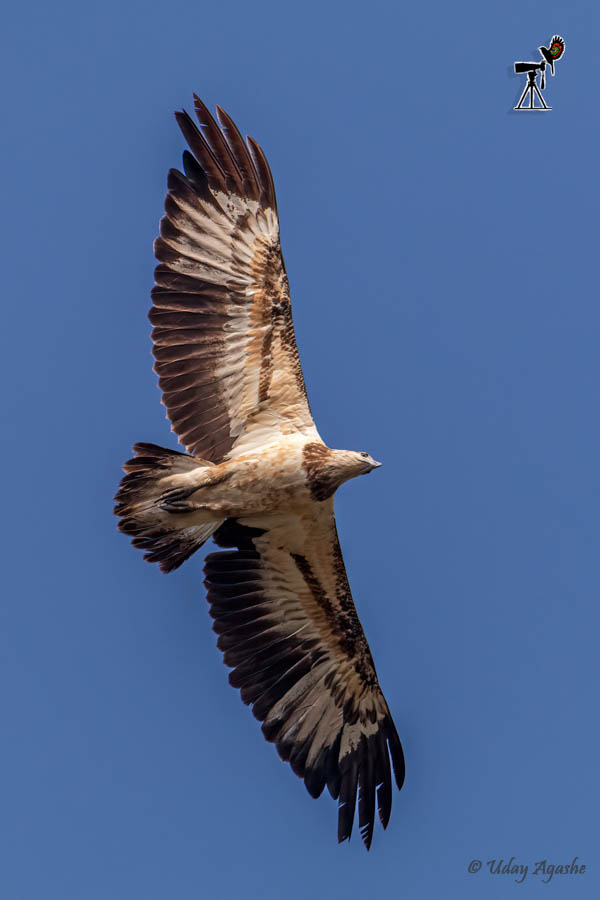

For the evening, we again planned for the Shoal-bay area but here we will be visiting mainly the mangrove area for the Whistler (and the eternal hope of another sighting of the Ruddy Kingfisher). This time while going thru the ferry, I got the entire journey on video (memories of a different journey).
As we reached the Kalatang area, instead of going to our regular birding path, we went towards the mangroves, once again finding our way thru the mud. Immediately we were greeted by the woodpecker there but the Whistler remained elusive despite all our attempts. We could hear the bird from some distance, a couple of times but it did not come any near.
Whistler didn’t but a buffalo did come near us, scaring me like anything. As we were coming back to the main road from the mangroves, I thought of taking a short cut and that happened to (relatively) close to the buffalo. Thankfully it was restrained strongly but as it saw us approaching, it did give a charge (had those restraints been any weaker, I would have had it!!)
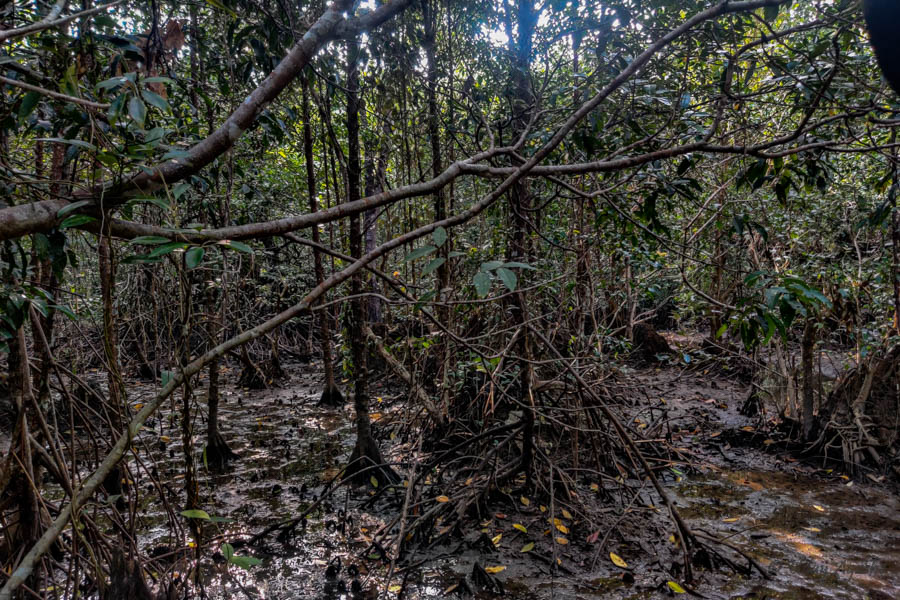
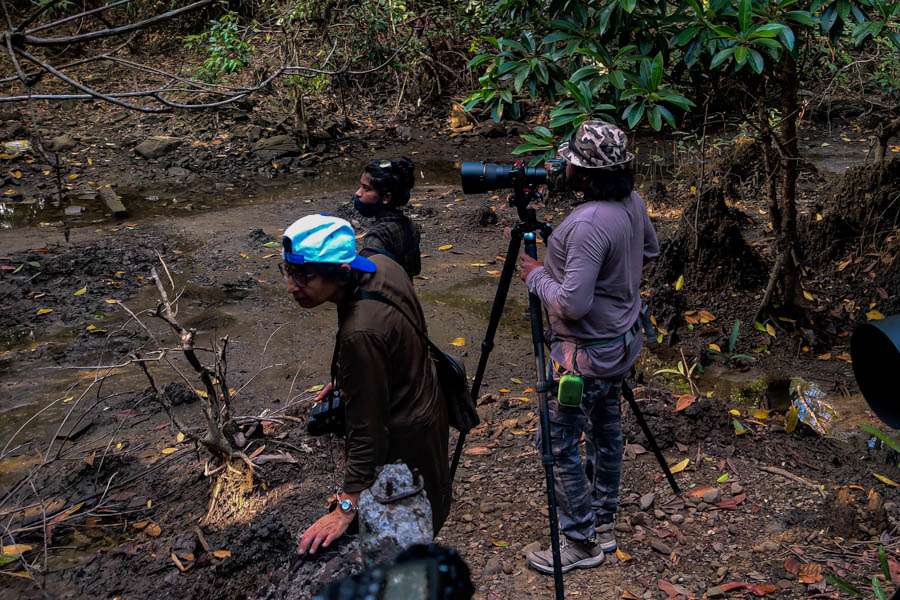
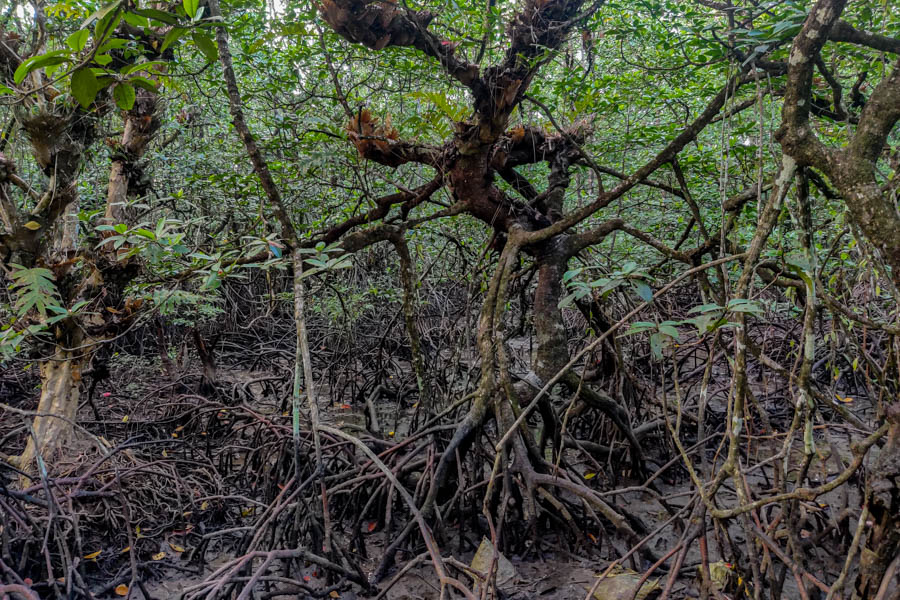
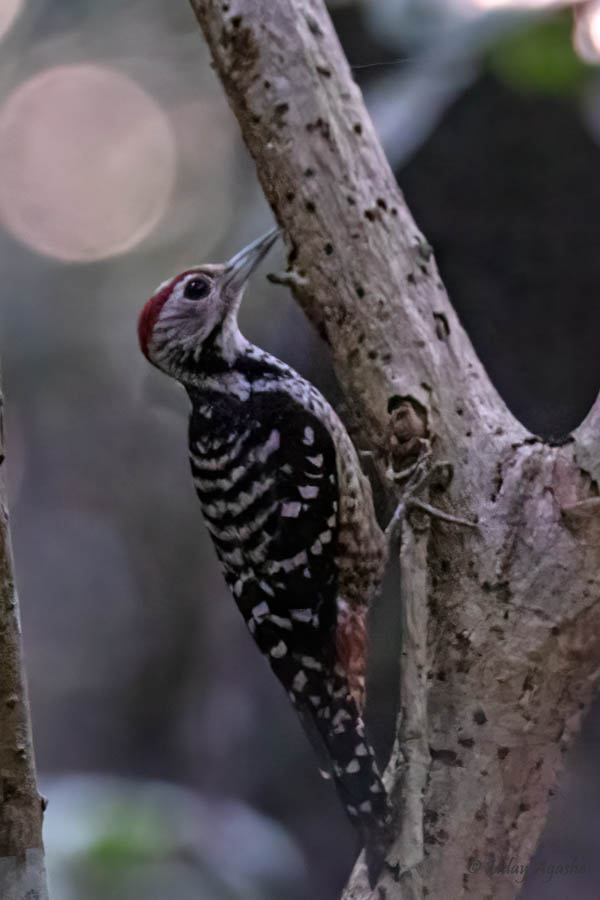

And even on the roadside, there was not much movement so we decided to try our luck again with the Ruddy Kingfisher. We reached the habitat where we had seen it on Day 2 and started our search. We once again waited enough for the kingfisher first and then for the whistler but this seemed to be not our evening! After the morning bonanza of lifers, the evening was completely dry.
We did have one more chance though as we planned for another owl search, this time in the Shoal Bar area. Once again we waited till it was dark and then went on doe yet another wild-goose (or shall I say wild-owl) chase. Our guide had identified 4-5 different spots and we went through them all but had no luck. In the end, we encountered a snake on the path. Walking in the jungle without light is made more difficult because of such finds. Luckily this was a non-venomous one.


The Final Day of Birding
Yesterday at dinner, we had discussed a bit about which area to visit. As such, we had seen more of the endemic species (barring a few exceptions) but we could probably try to get better photos. Mrs. & Mr. Vanarase had made it clear that they were taking the day off (they will be going on their own). In the evening even the Khare’s decided to join them. But we kept going with only the birding objective (it’s a different thing that it wasn’t that fruitful)! Oh, and the outcome of our dinner discussion was to visit Shoal Bay again.
The day started well, we have been seeing the Andaman Treepie from some distance so far, today t came a little closer. Even the Andaman Woodpecker was generous today (it kept on coming back to the same tree thereby allowing us some photos as well as nice videos). The usual suspects Drongos, Minivets, Orioles, and Starlings were there too.
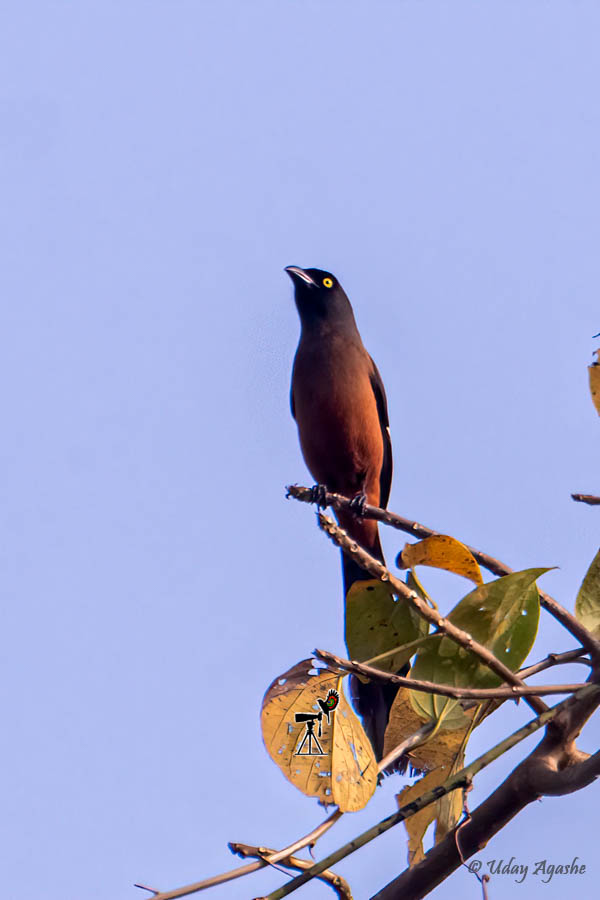


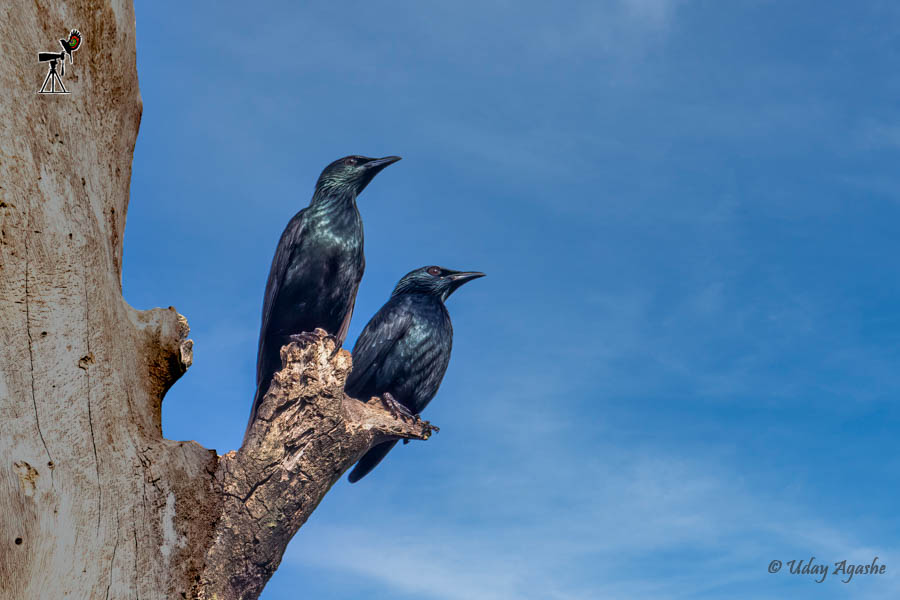
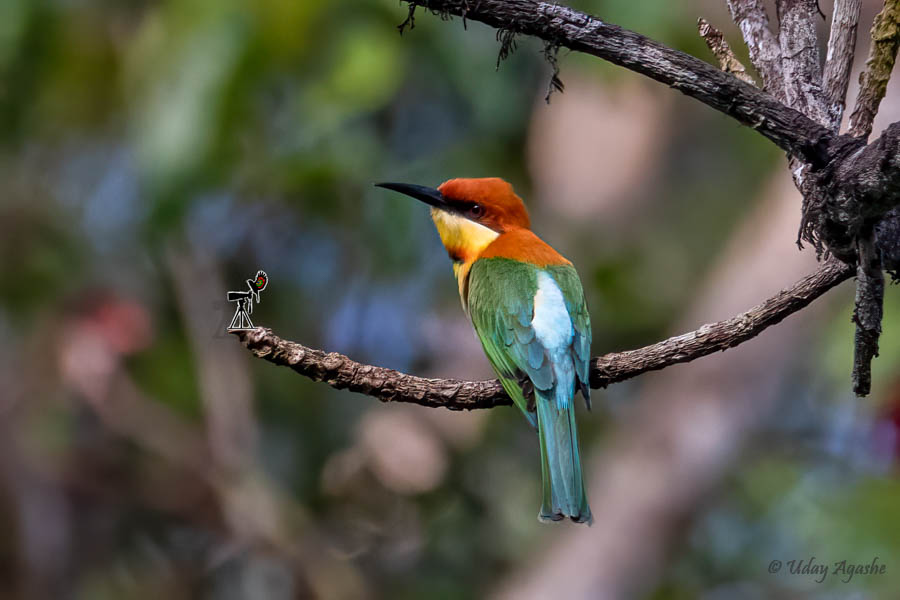
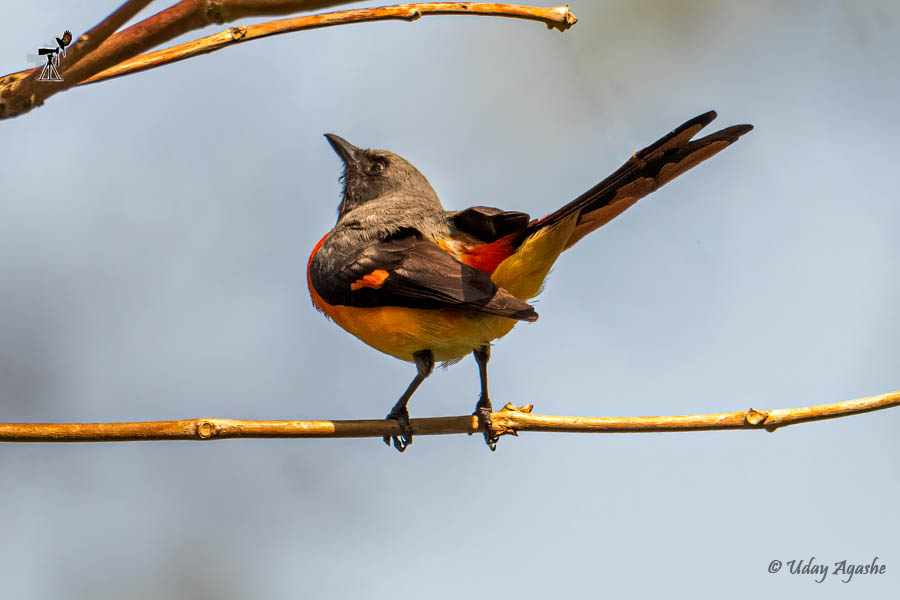
At breakfast time, we could see movement in the nearby bushes. Turned out to be the Andaman Bulbul. We quickly kept our paper plates aside and put the camera in action. As a bonus, we could even see the Olive-backed Sunbird.
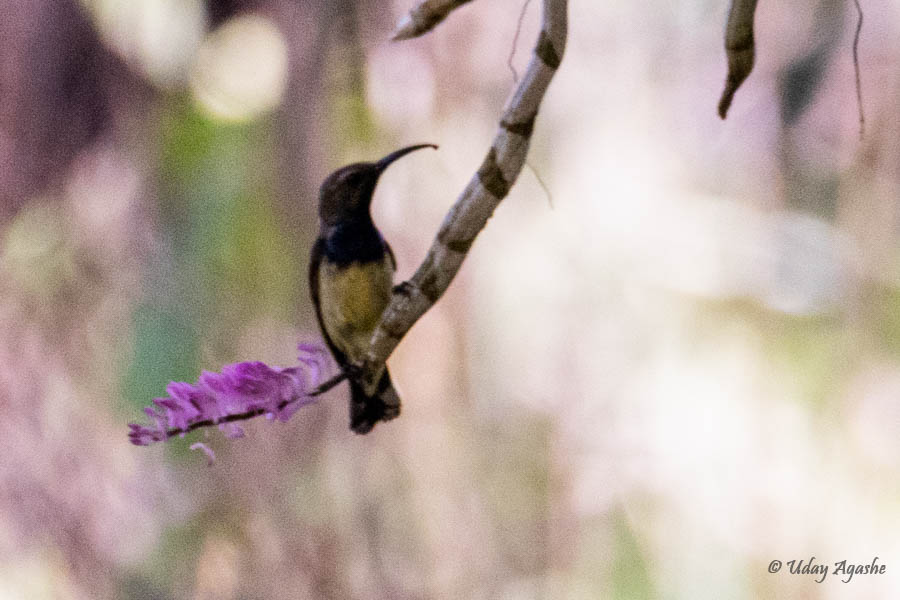
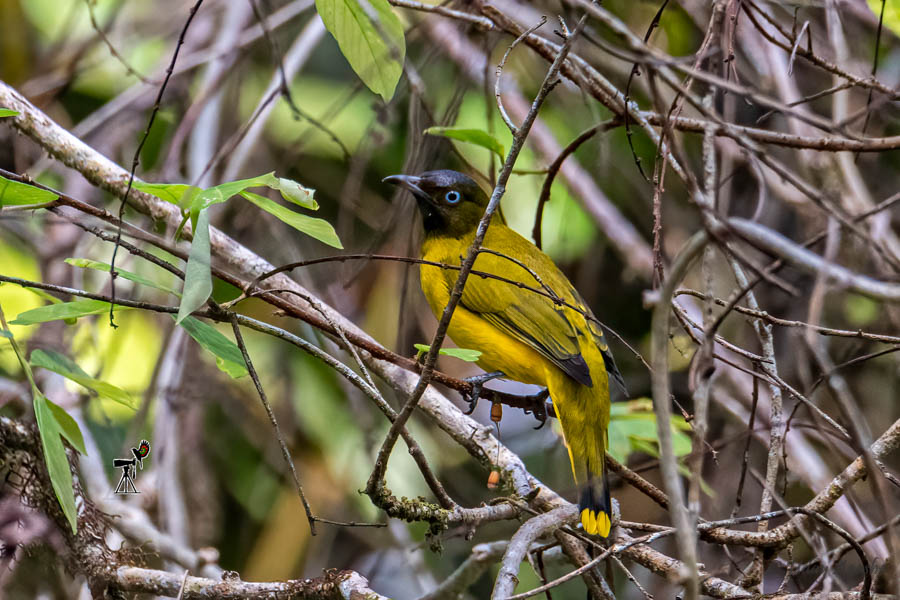
Just then our guide got a call from her friend informing us about the sighting of the White-breasted Woodswallow. This was another rare bird and apparently, it was spotted in Shoal Bay but a little further ahead. We quickly got into our vehicle and drove fast. When we saw two other birding vehicles on the road, we got assured of the location was correct. Unfortunately, the swallow by then had flown away. But we did not lose hope. We all stay put and within a few minutes, the swallow was seen perched on a tree far from us. This time, before running near it I took record shots from the distance (and once again that was the right thing to do as the birds do not perch at one place for long).
We had covered a lot of distance today and it was getting late, so Jabili was urging us to start back. Just then we saw a woodpecker very close to us, which meant a delay of a few more minutes.

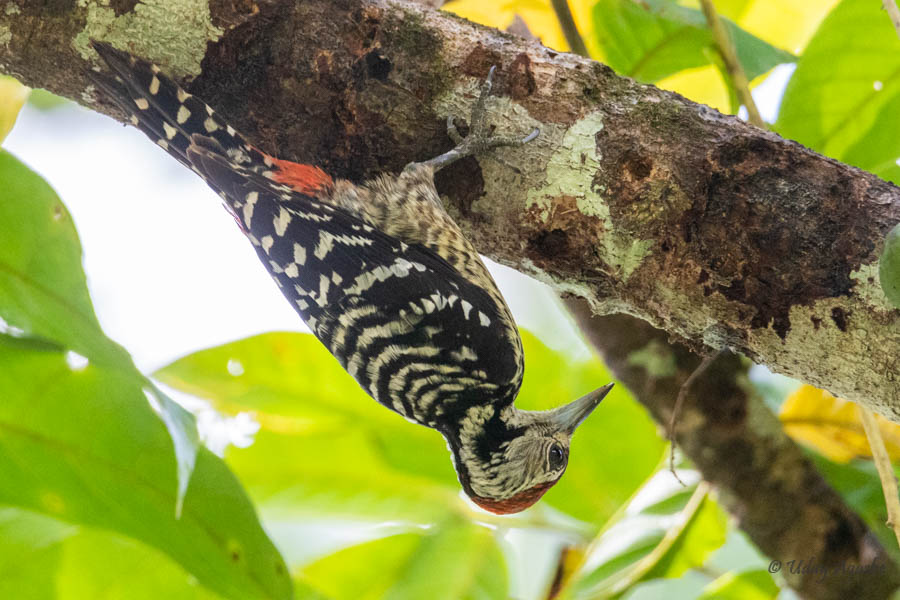
For the evening session, we once again went to Chidiya Tapu. But this time we did not stop at our birding location and instead decided to go as far as the Tourist location (Munda Pahad Beach). It was so crowded that we could not think of staying there. But the decision of going to that place was fruitful in the end because, on the way back, we saw a nicely perched Andaman Serpent Eagle. It was at a close distance and the bird was undisturbed (continued to remain there till we decided to move away).
We once again waited at the same Tea Stall. Got to see a pair of Collared Kingfisher on the electrical wires. Got some photos of the sunset and then went for another round of night birding.
Once again we got to see Hume’s Hawk Owl but other owls were absent. Tonight we did not spend much time there and returned to the hotel by 8 pm.
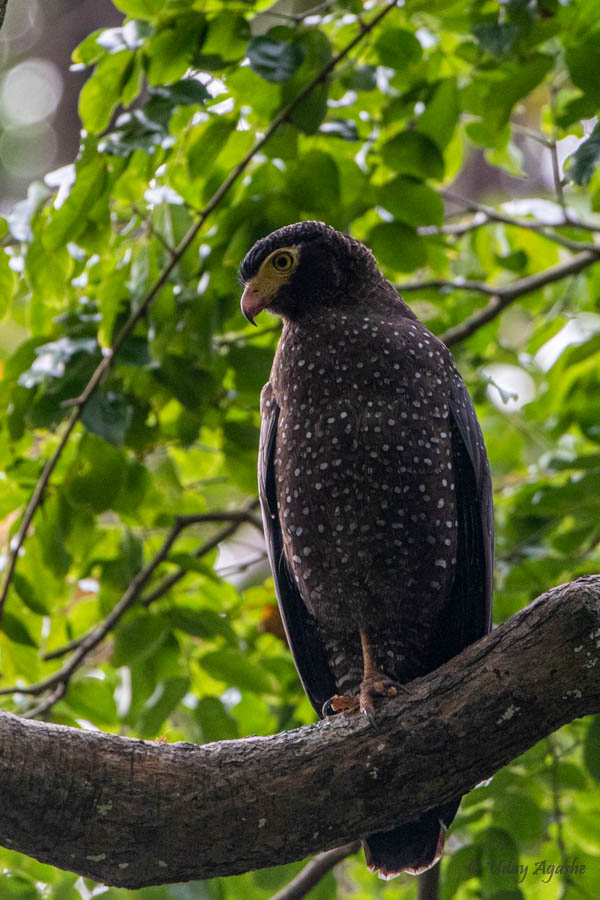
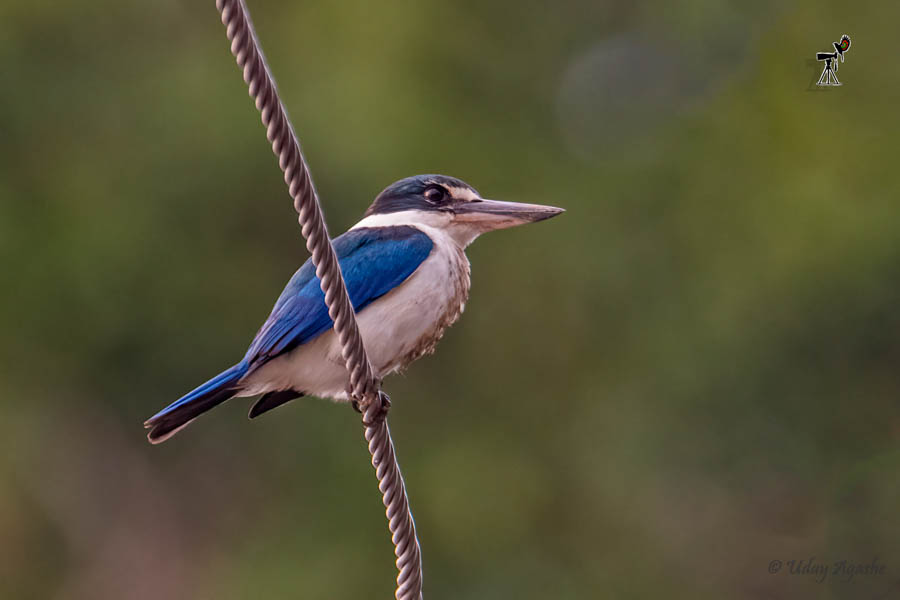

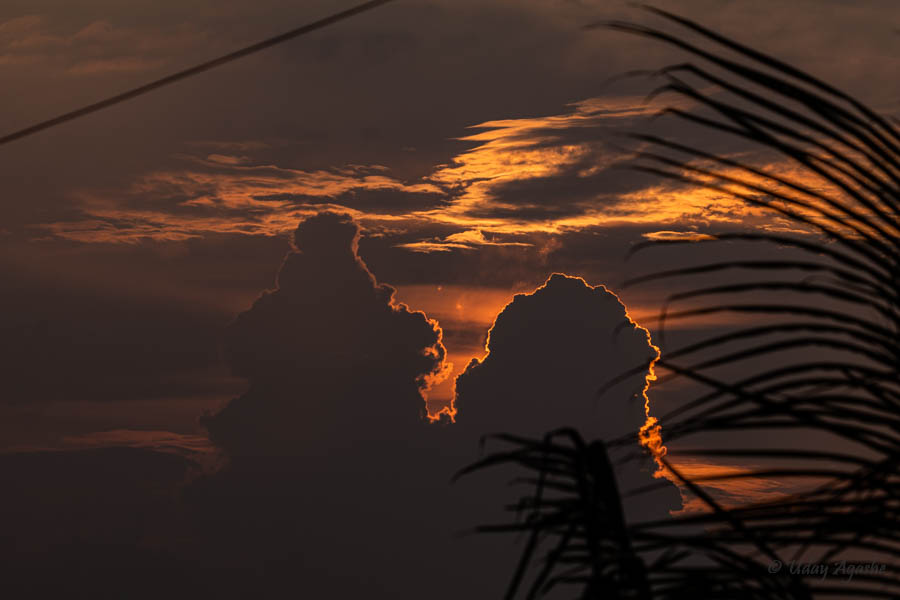
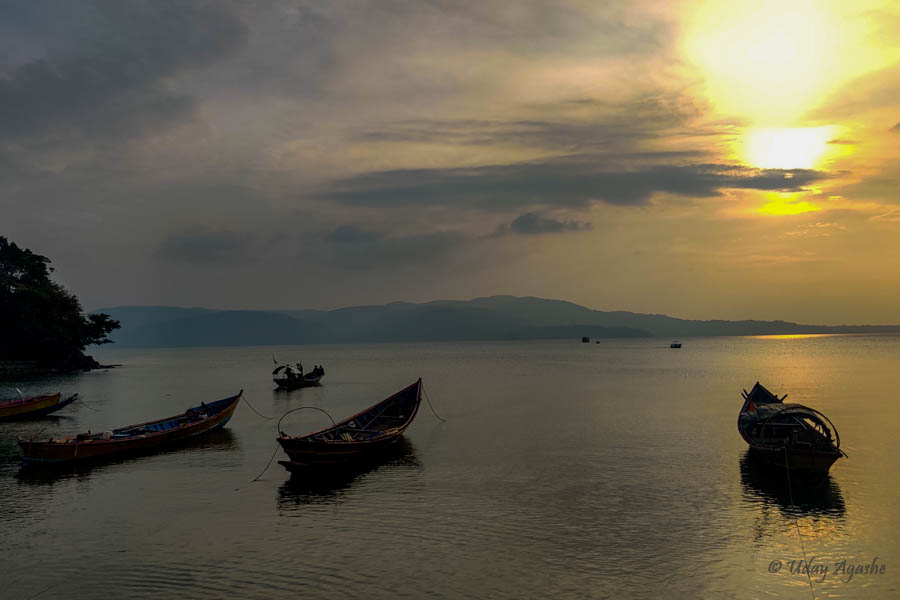
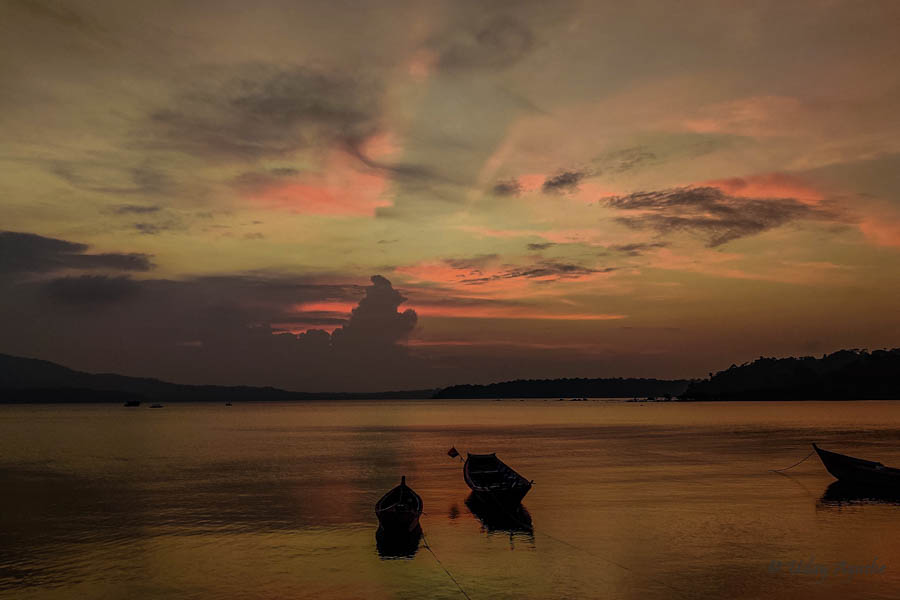
Overall I think it was a very good trip. Got to see 39 lifers in all and although not great photos, but got a few decent ones anyway. Got to see a new land, new habitat, new friends. Also decided that on the next trip, I will be keeping at least a day to visit the Cellular Jail and other famous monuments in Port Blair.